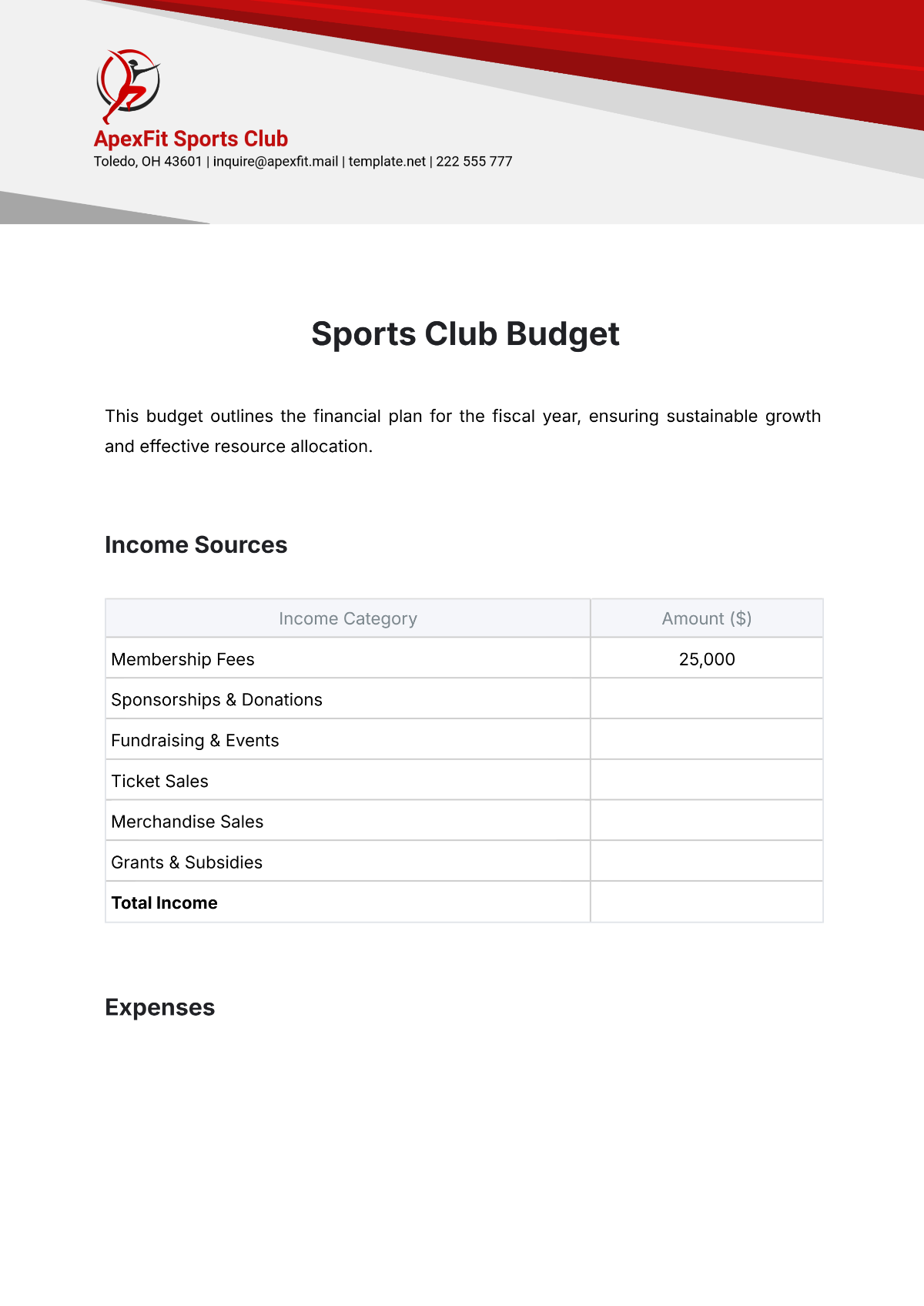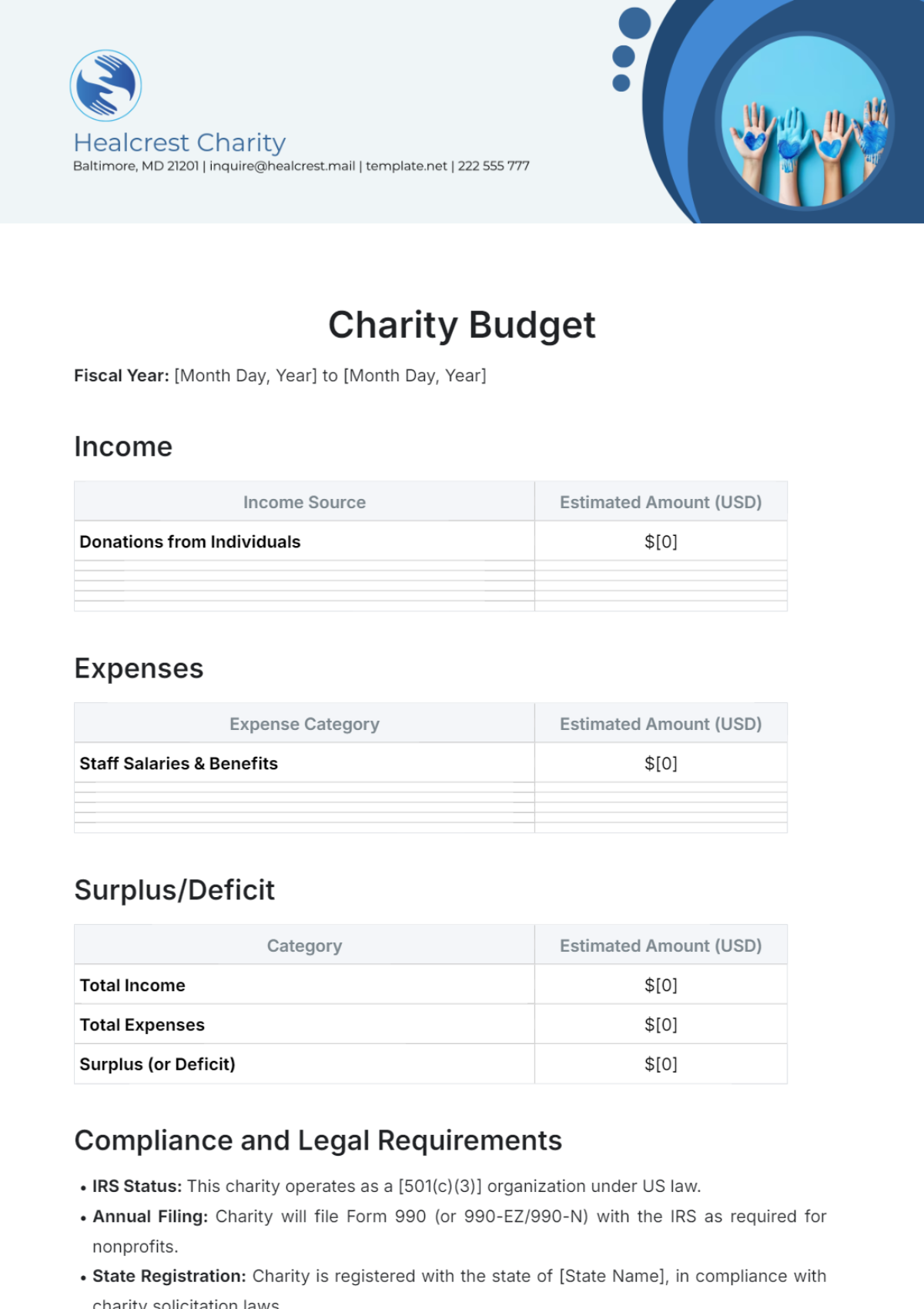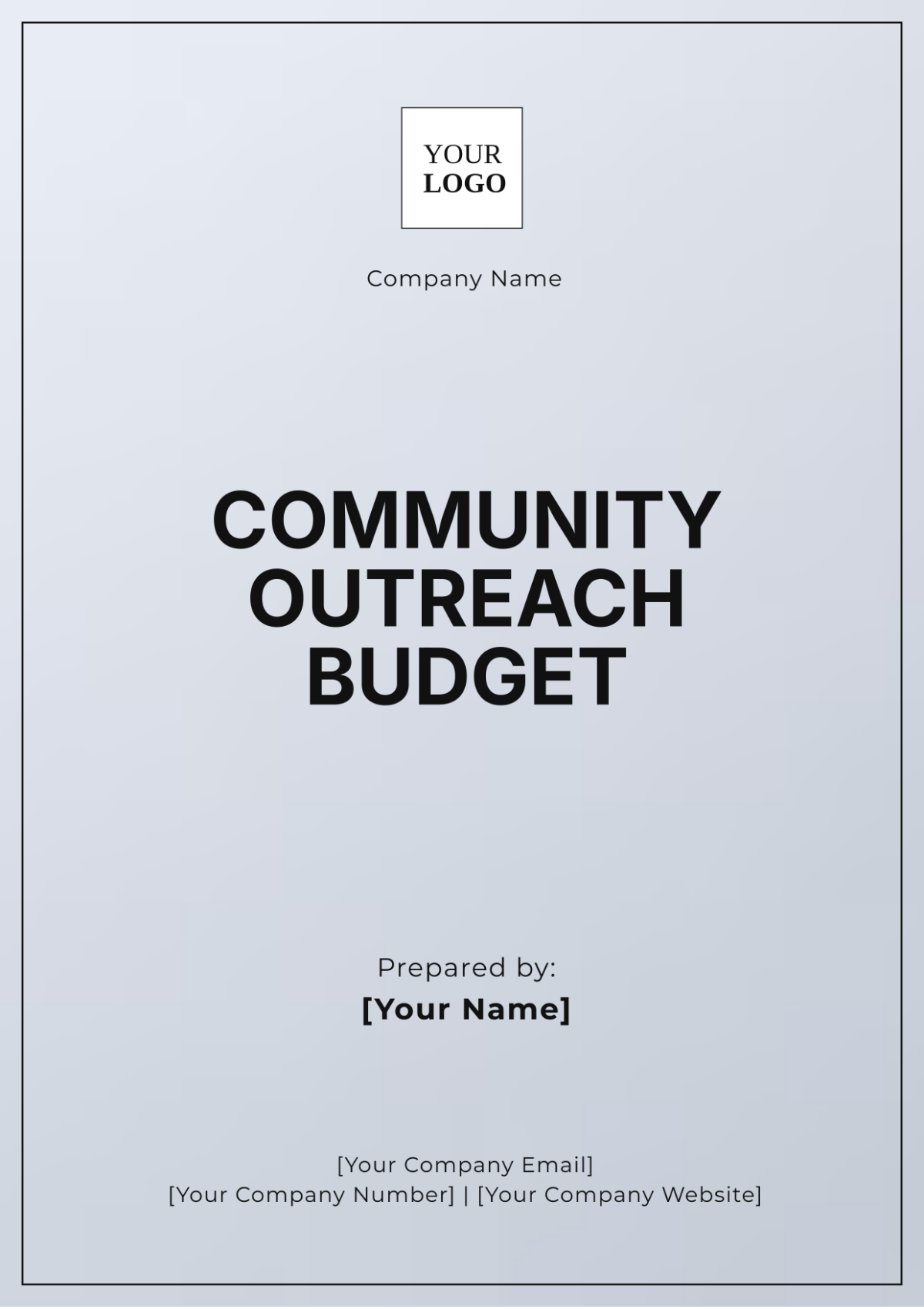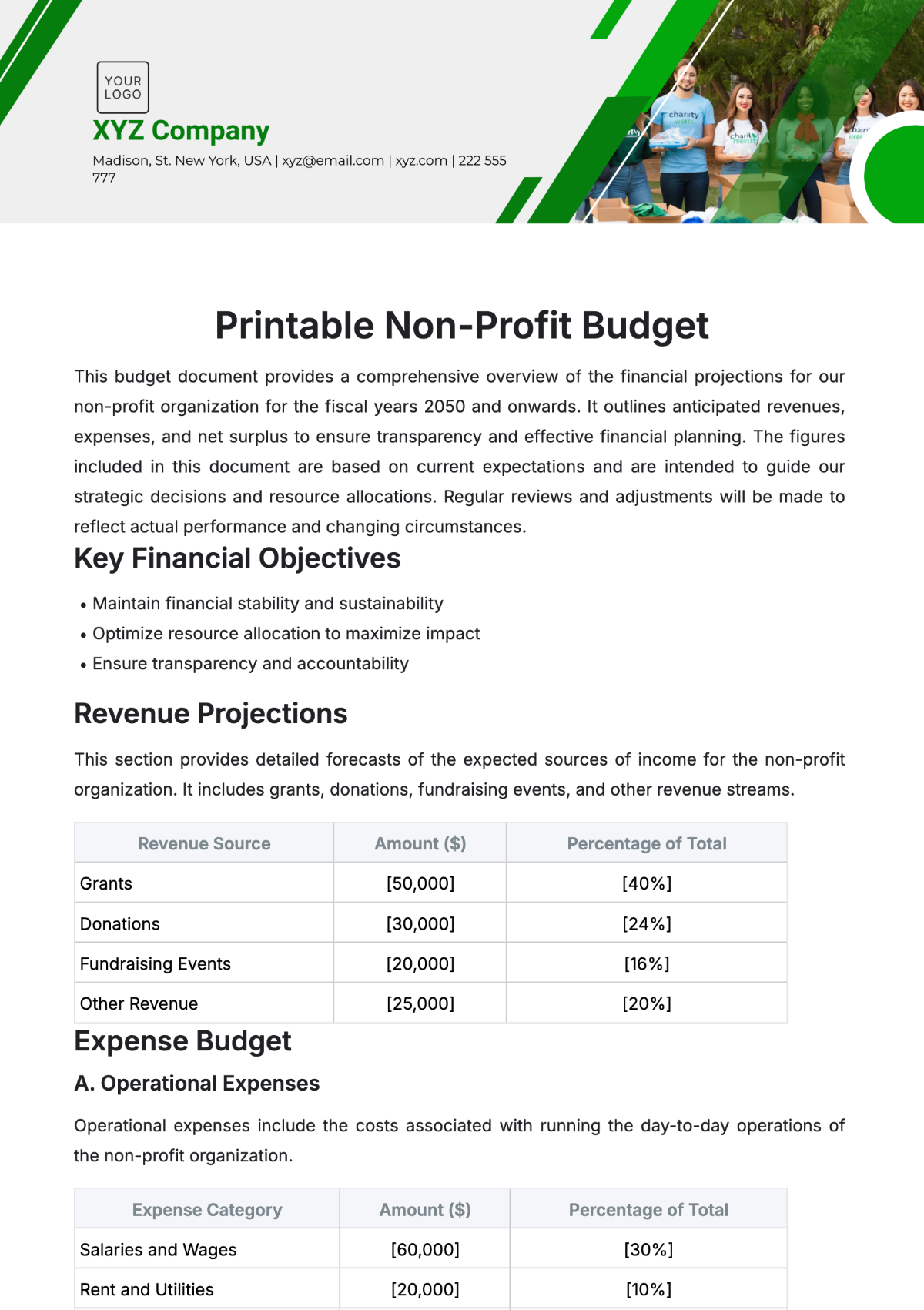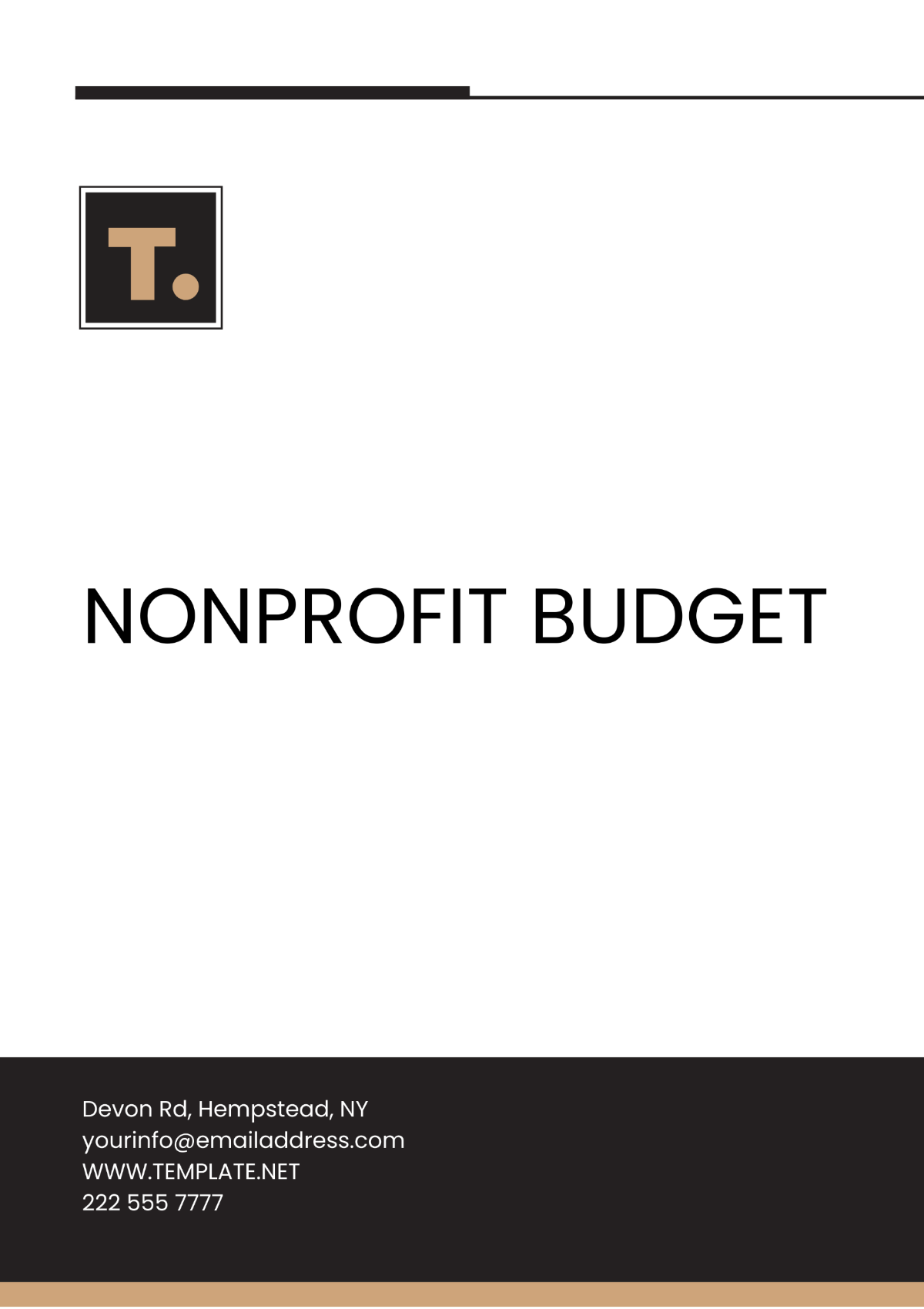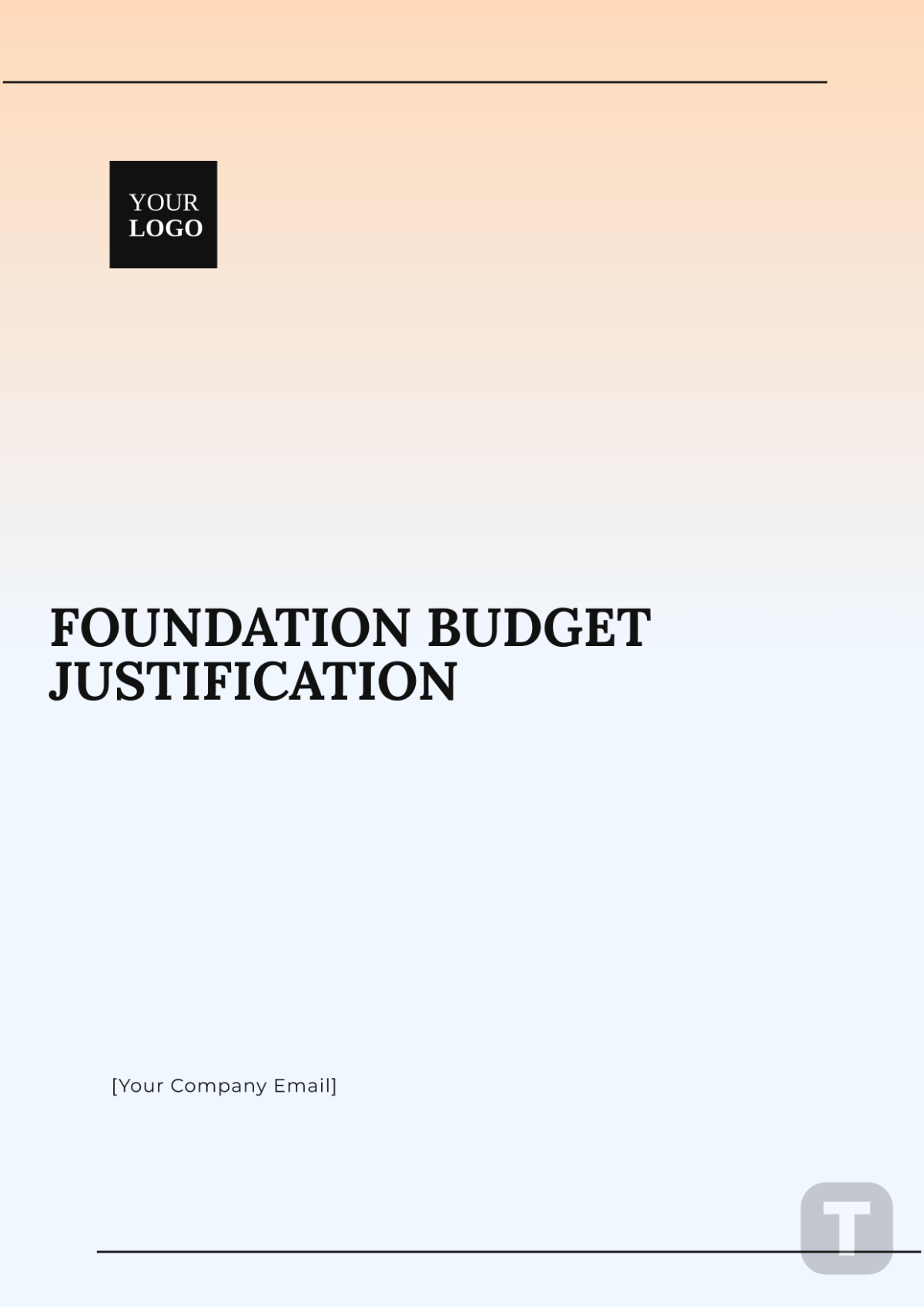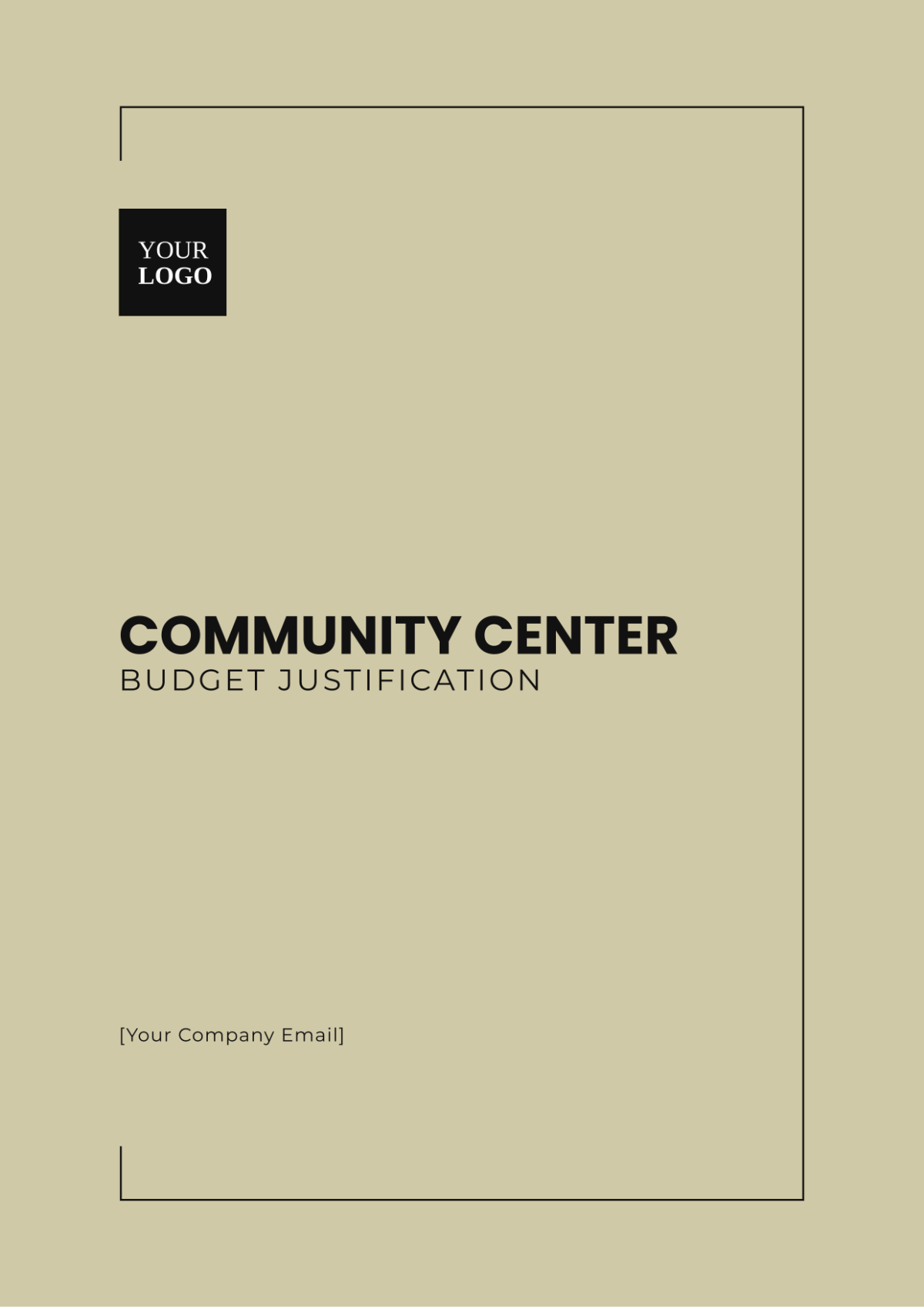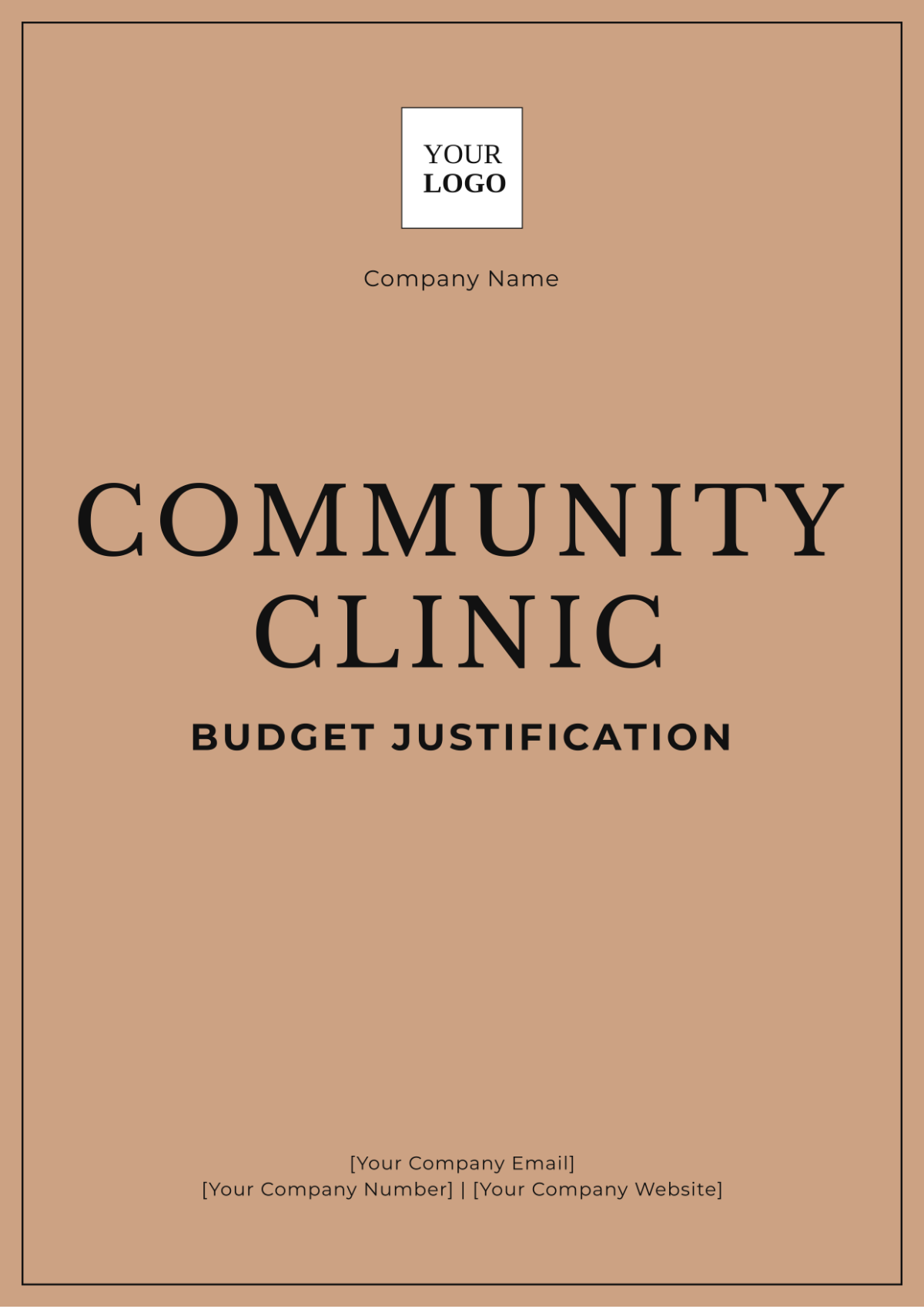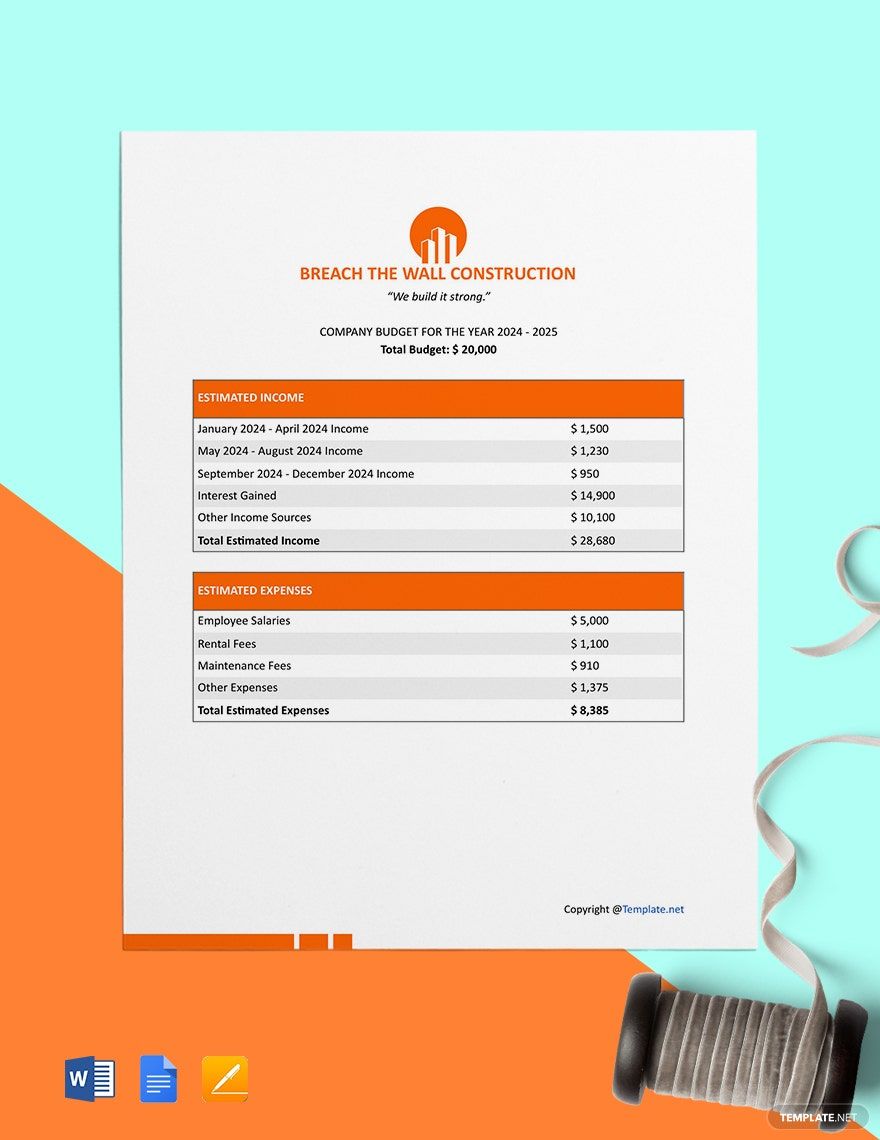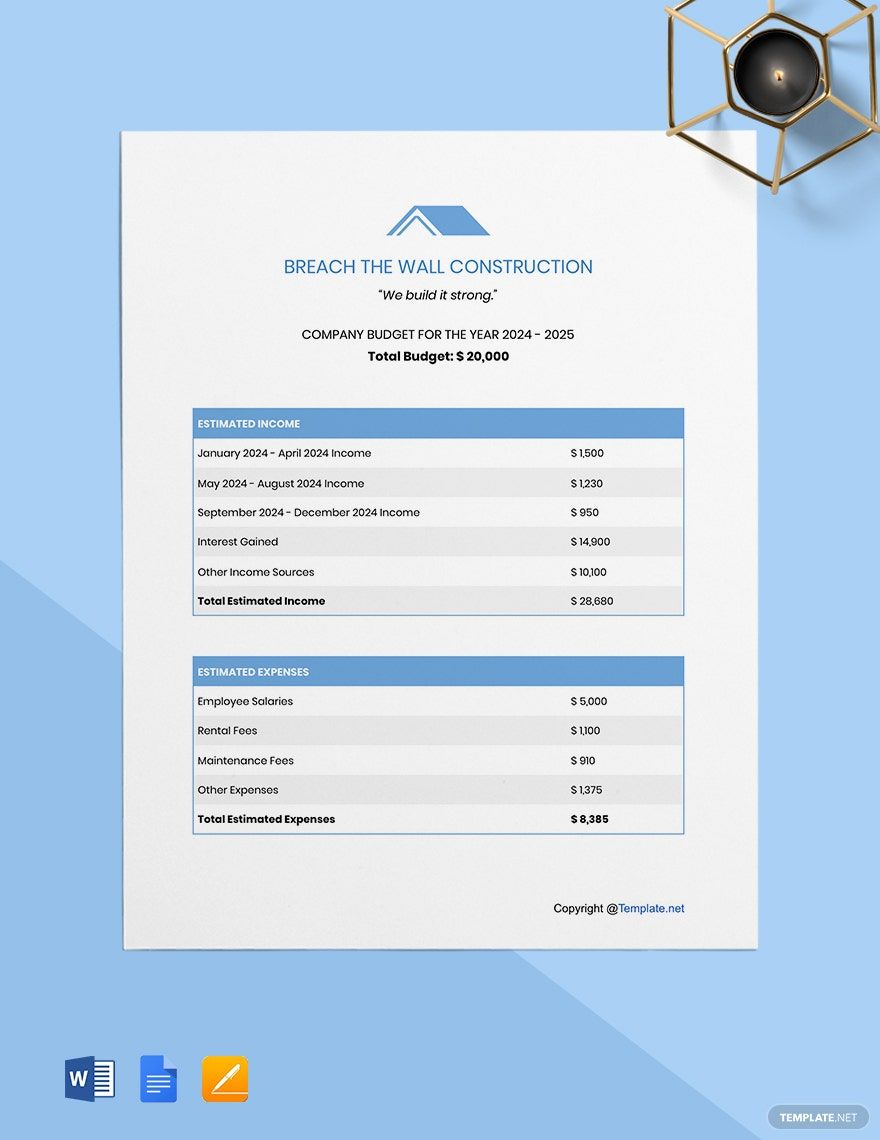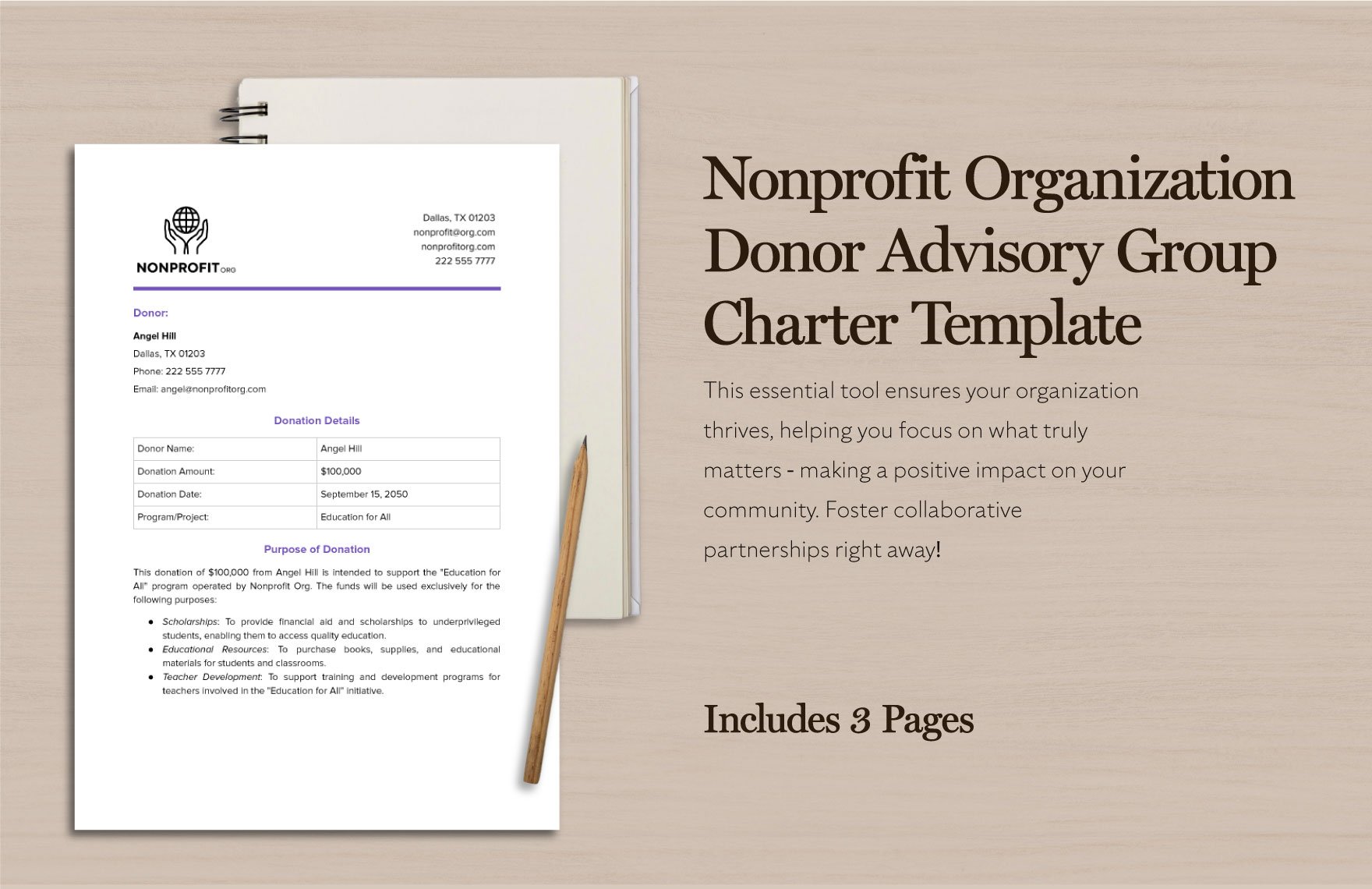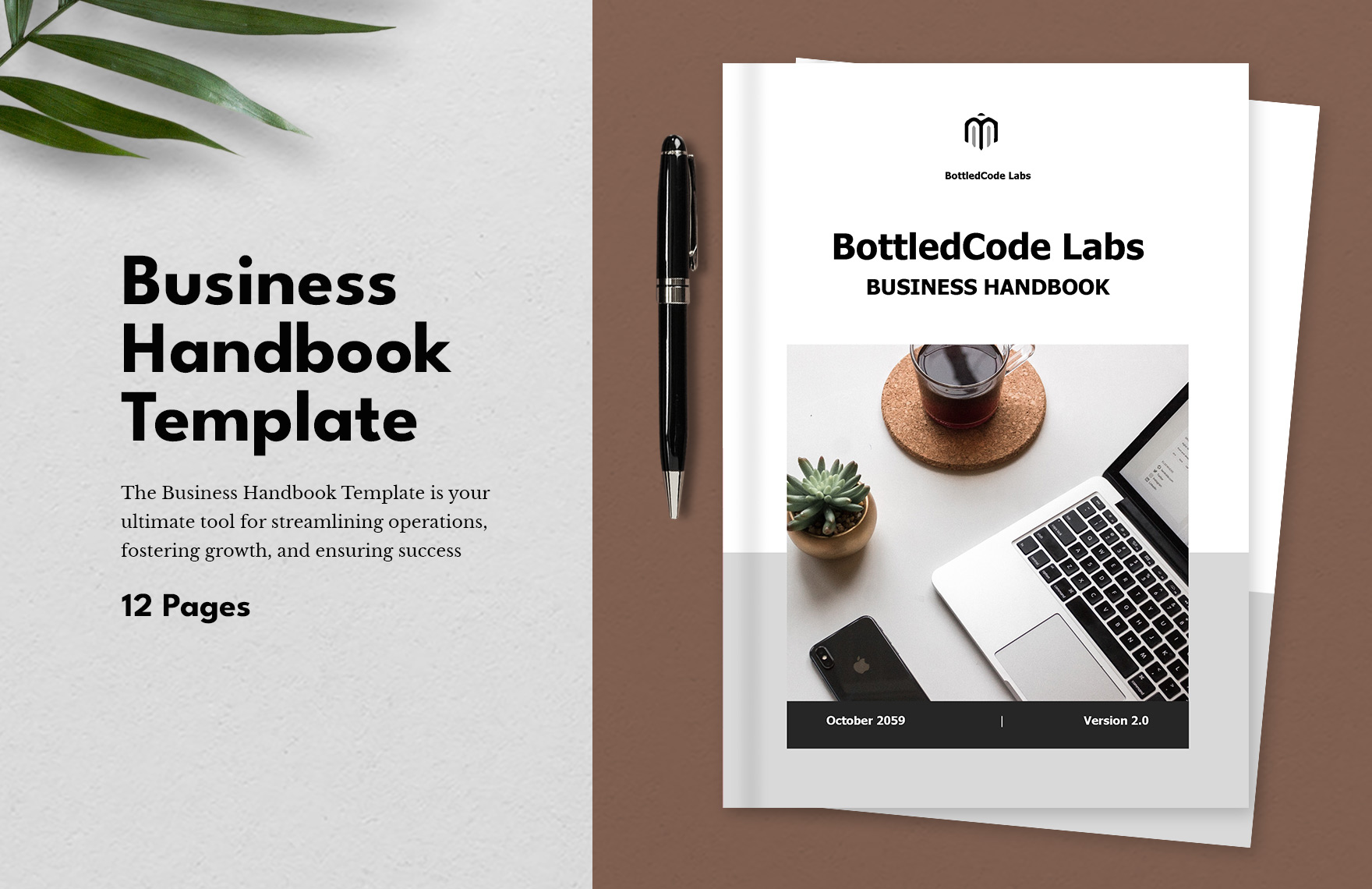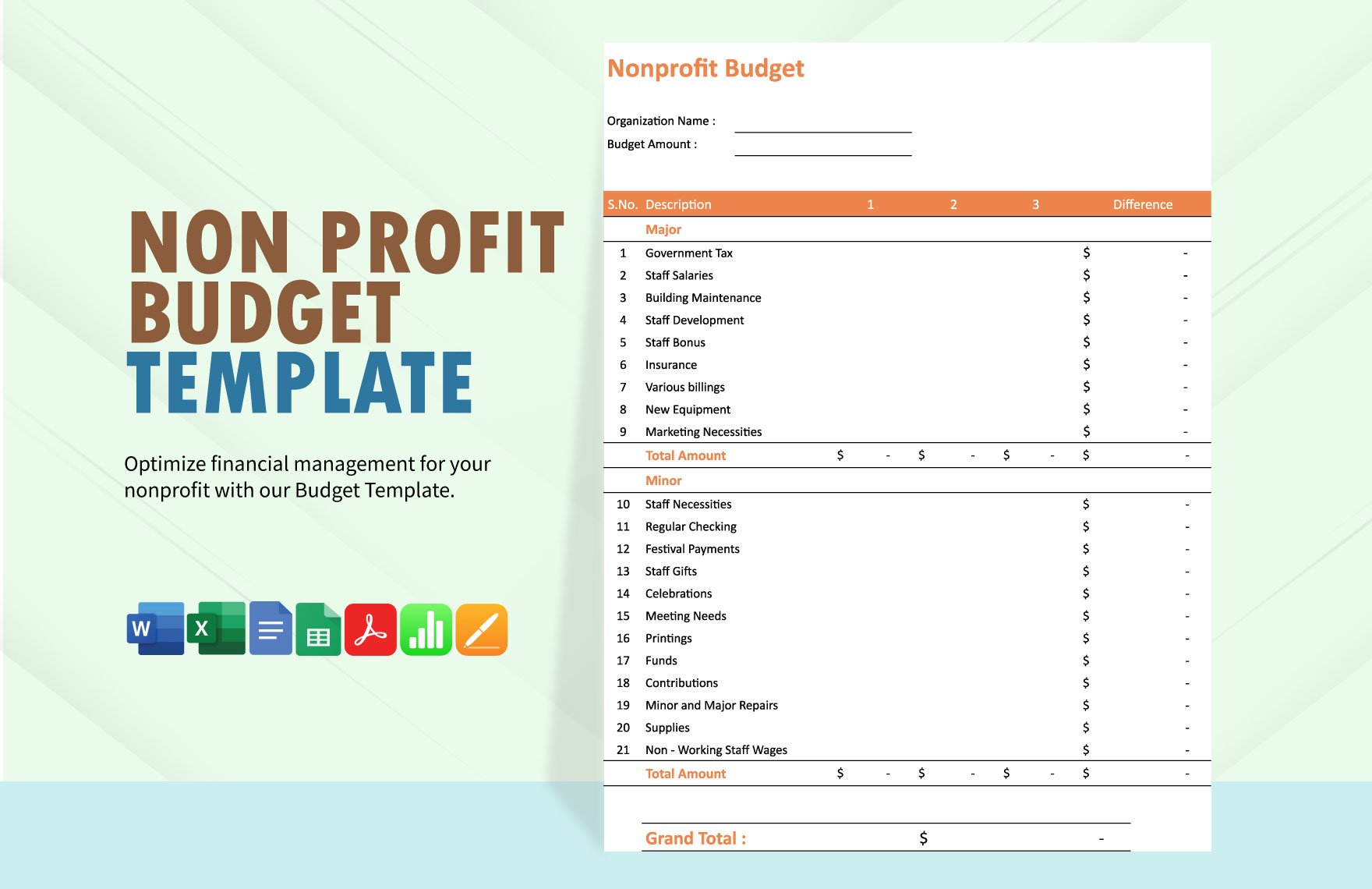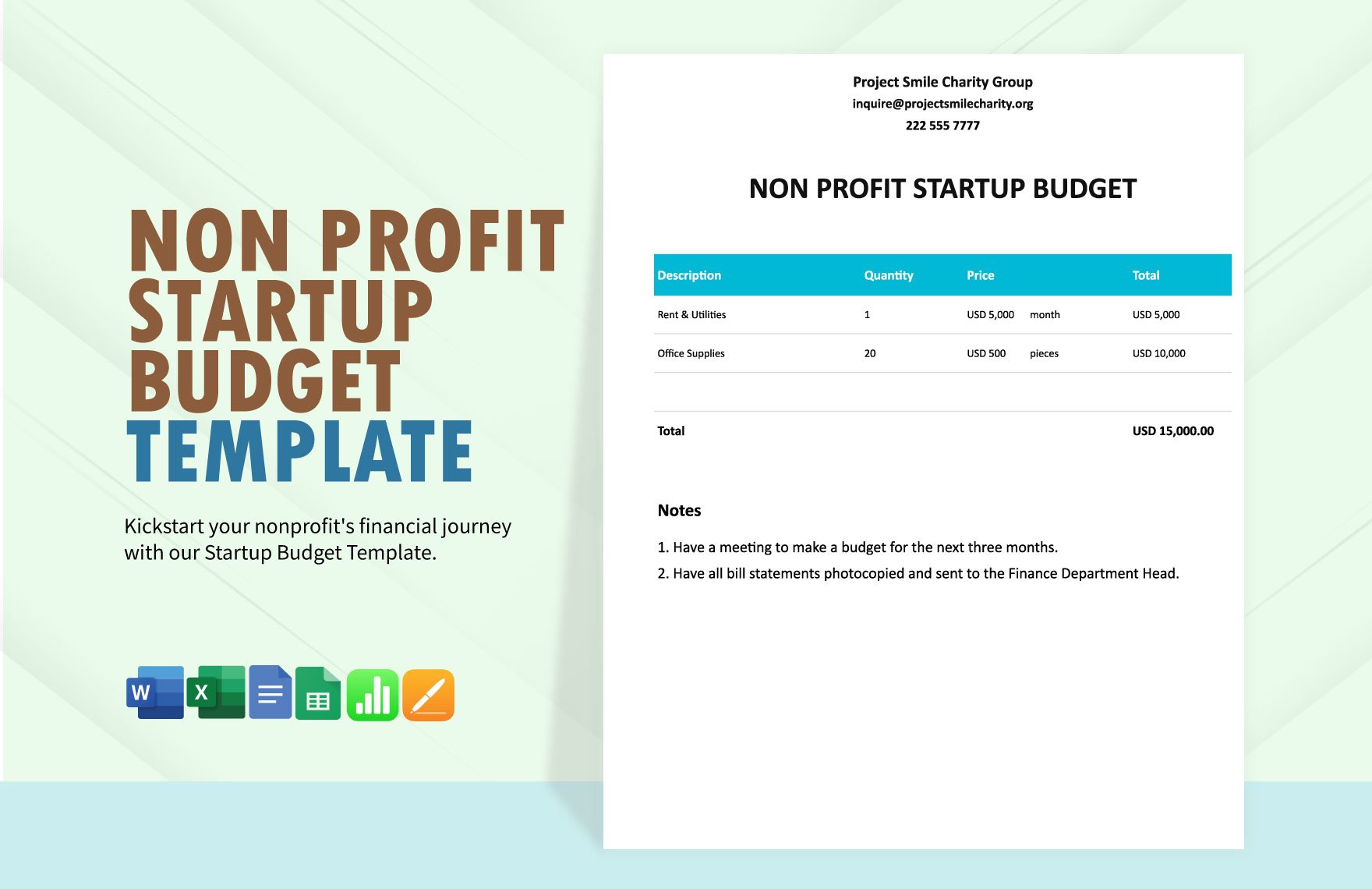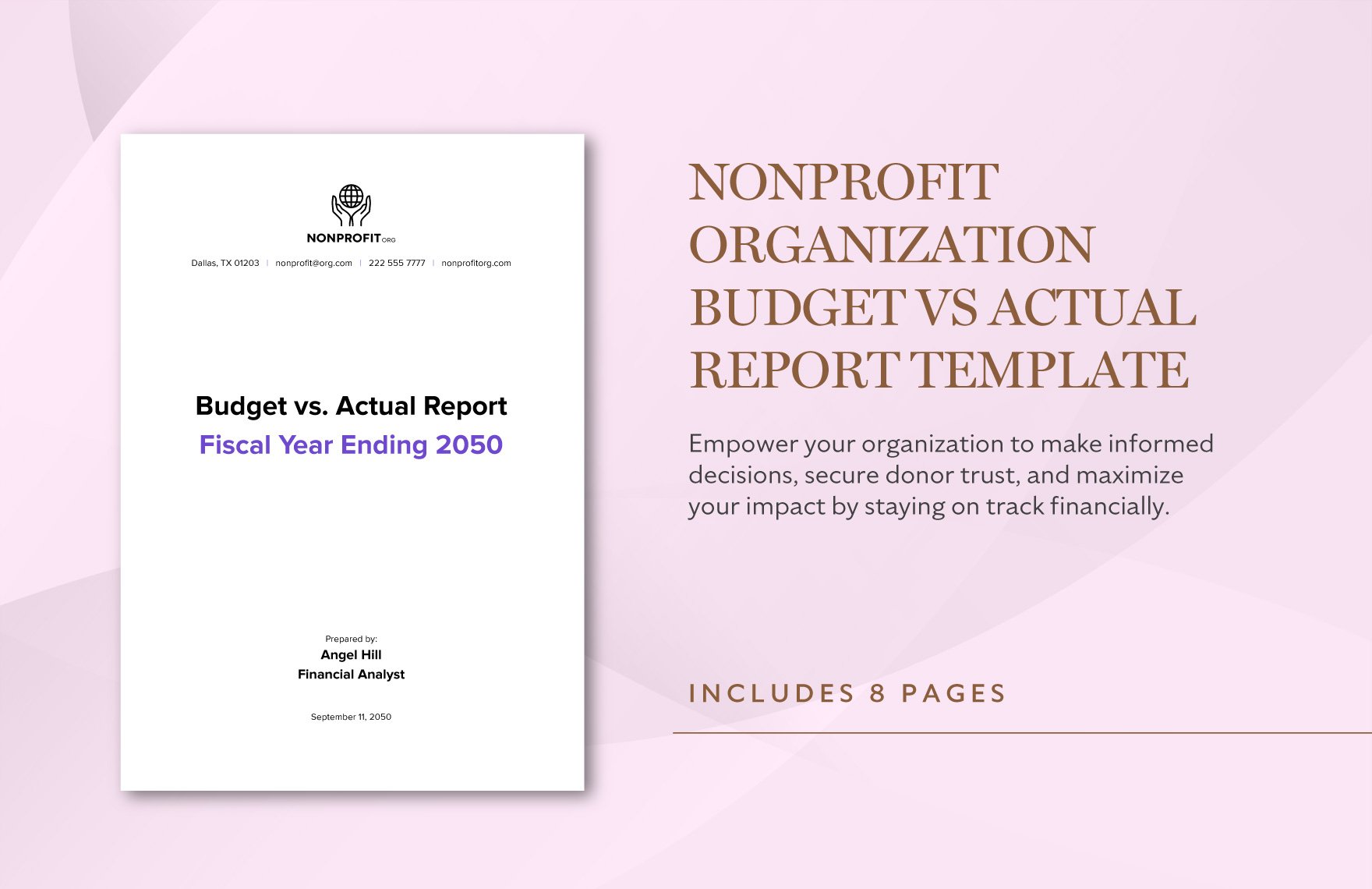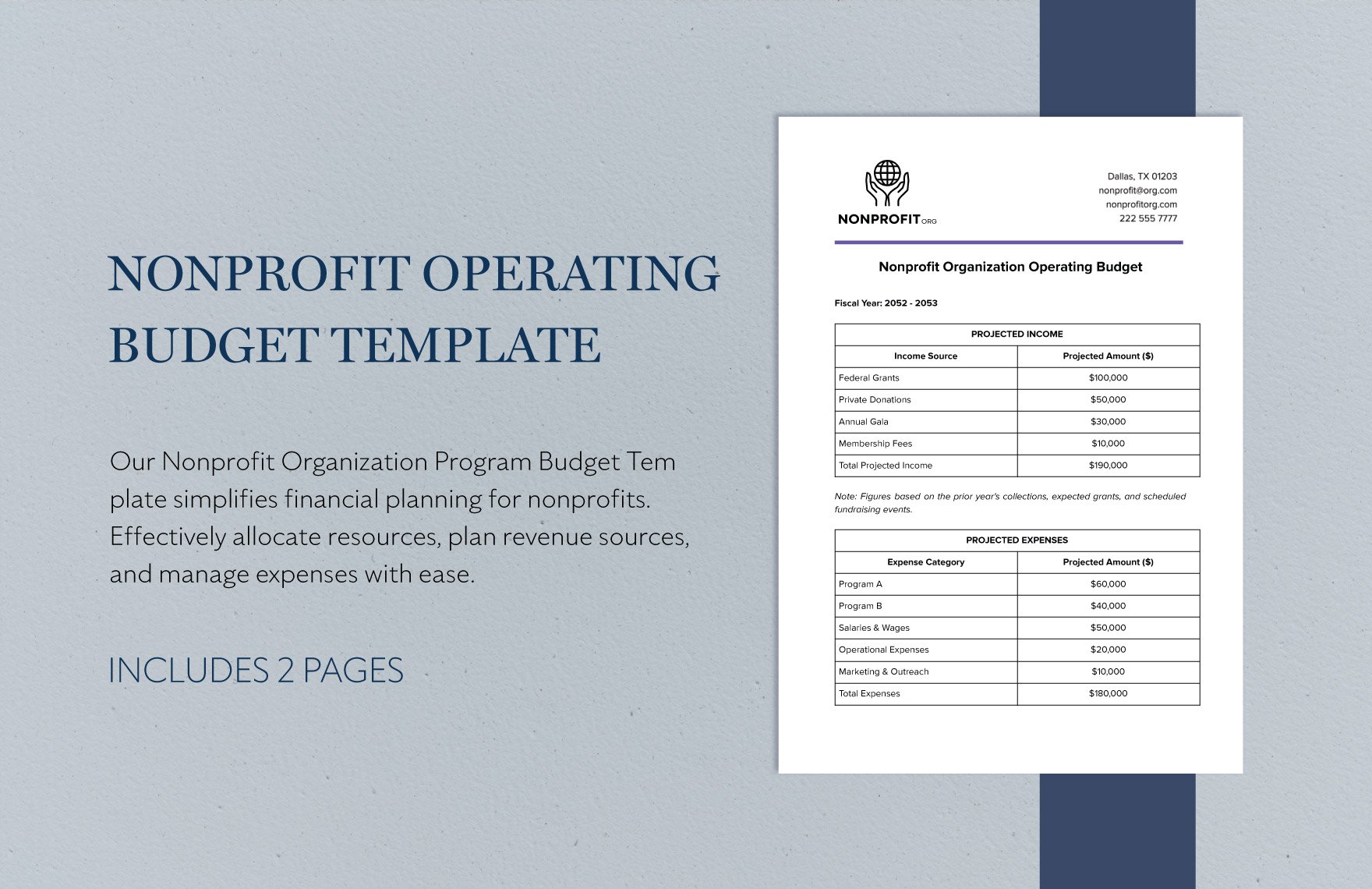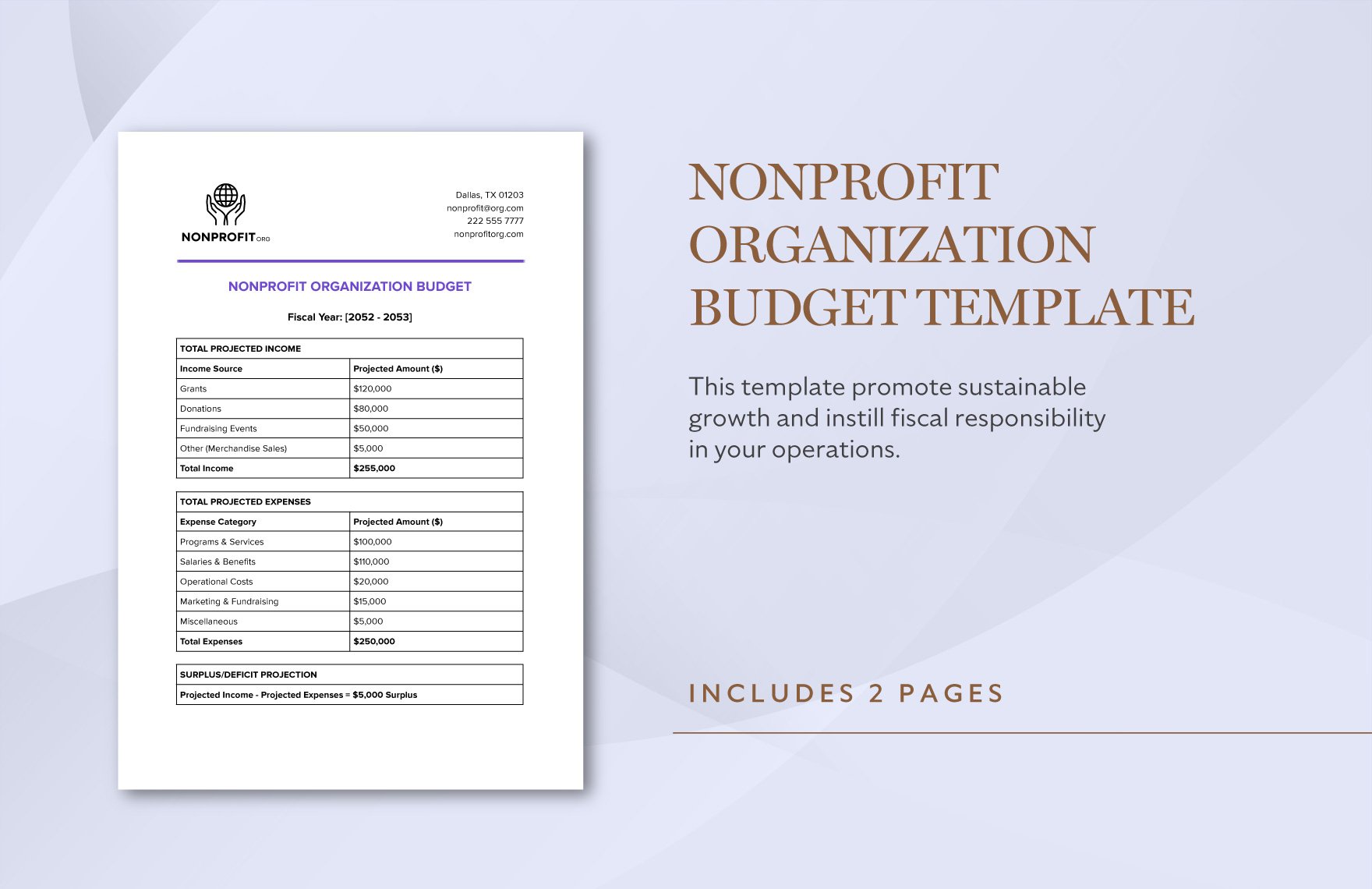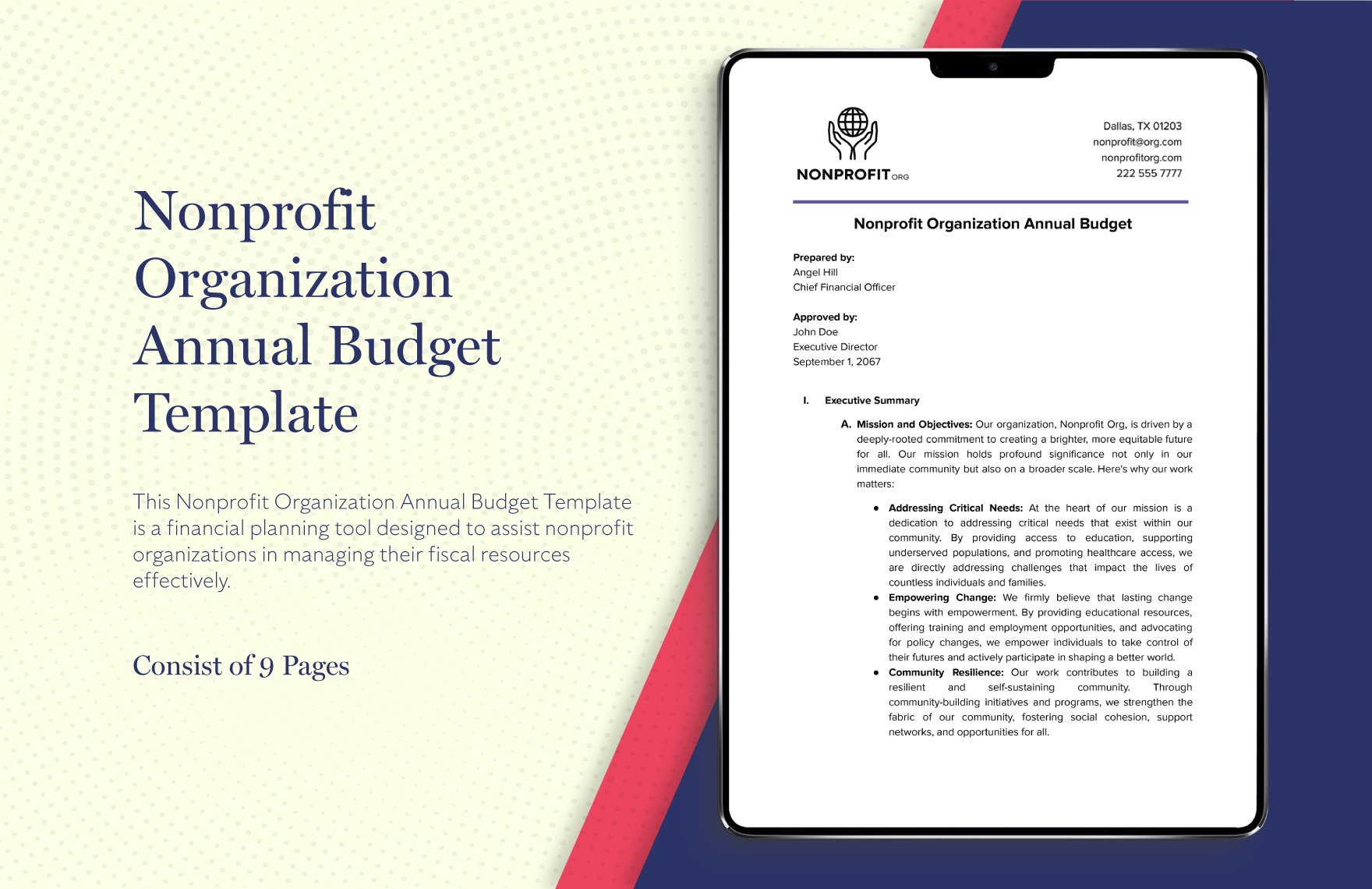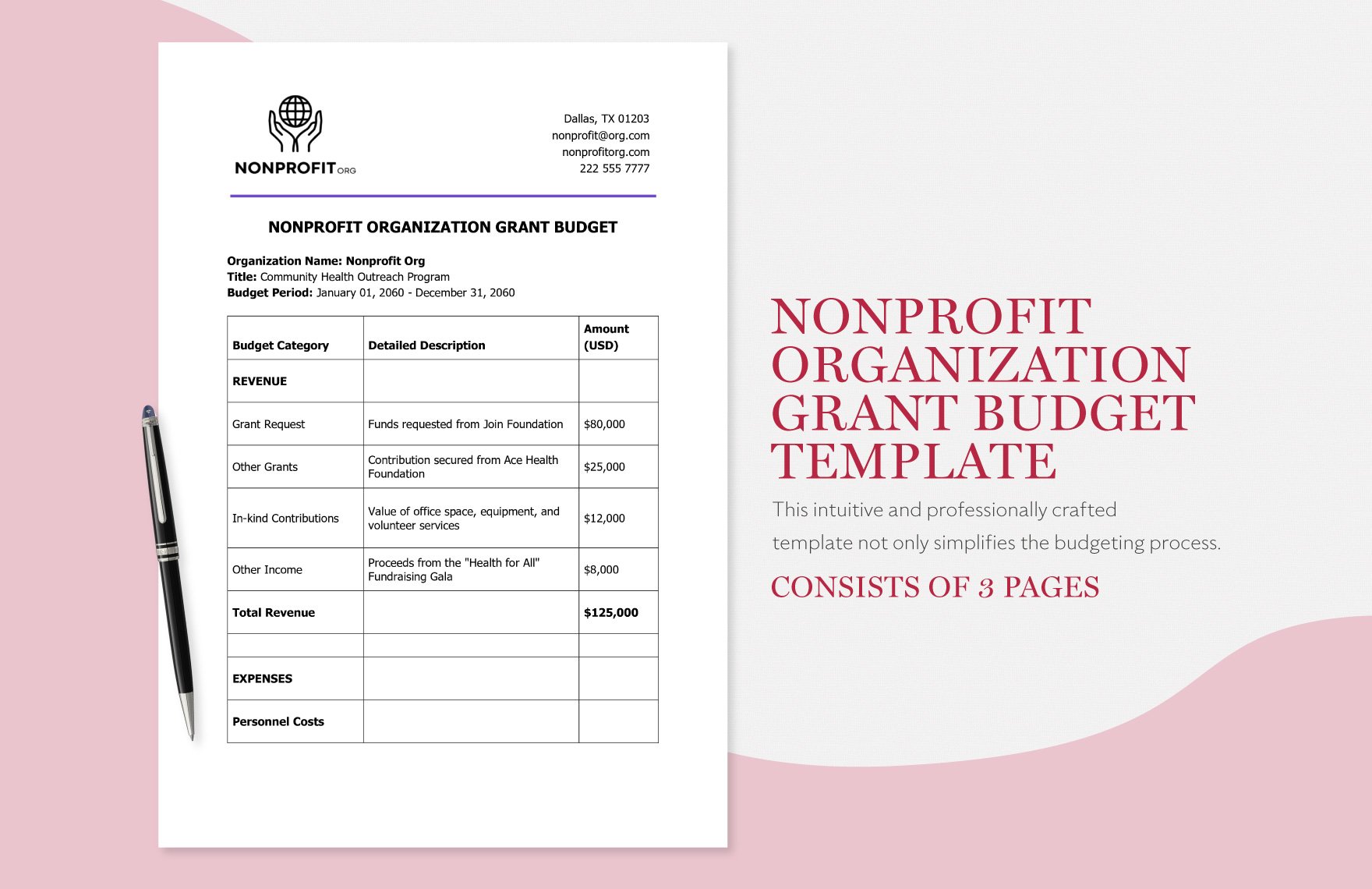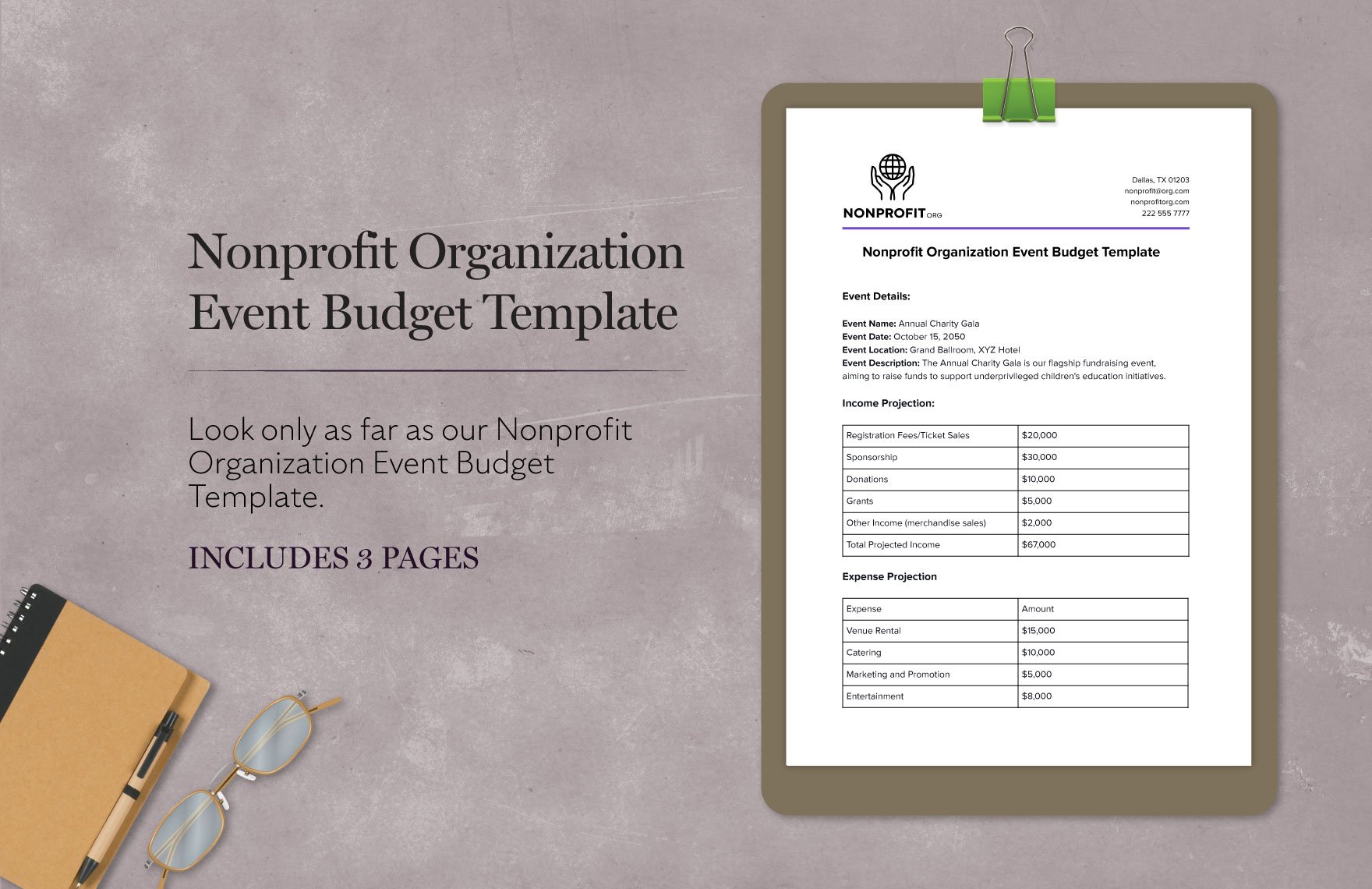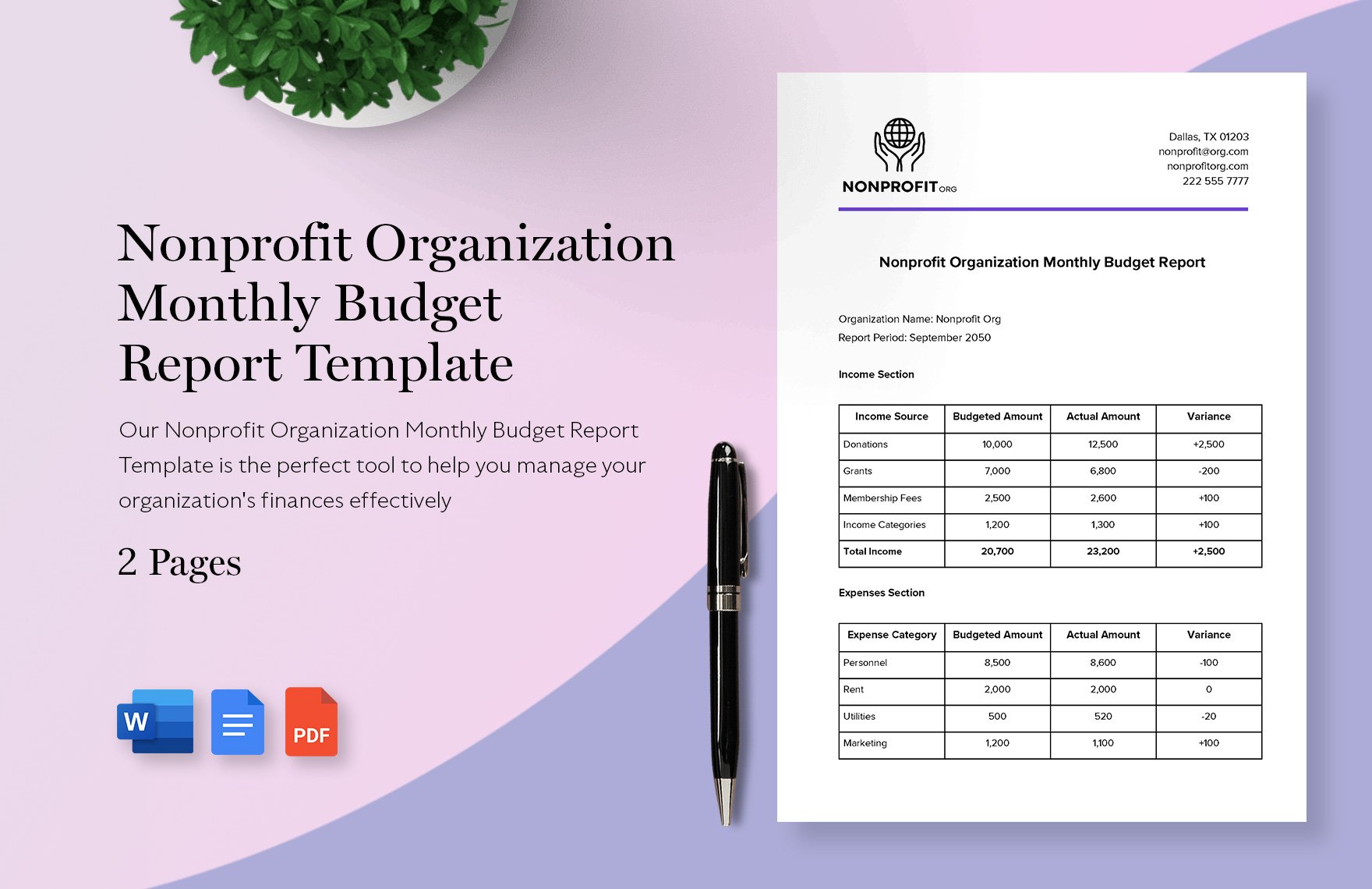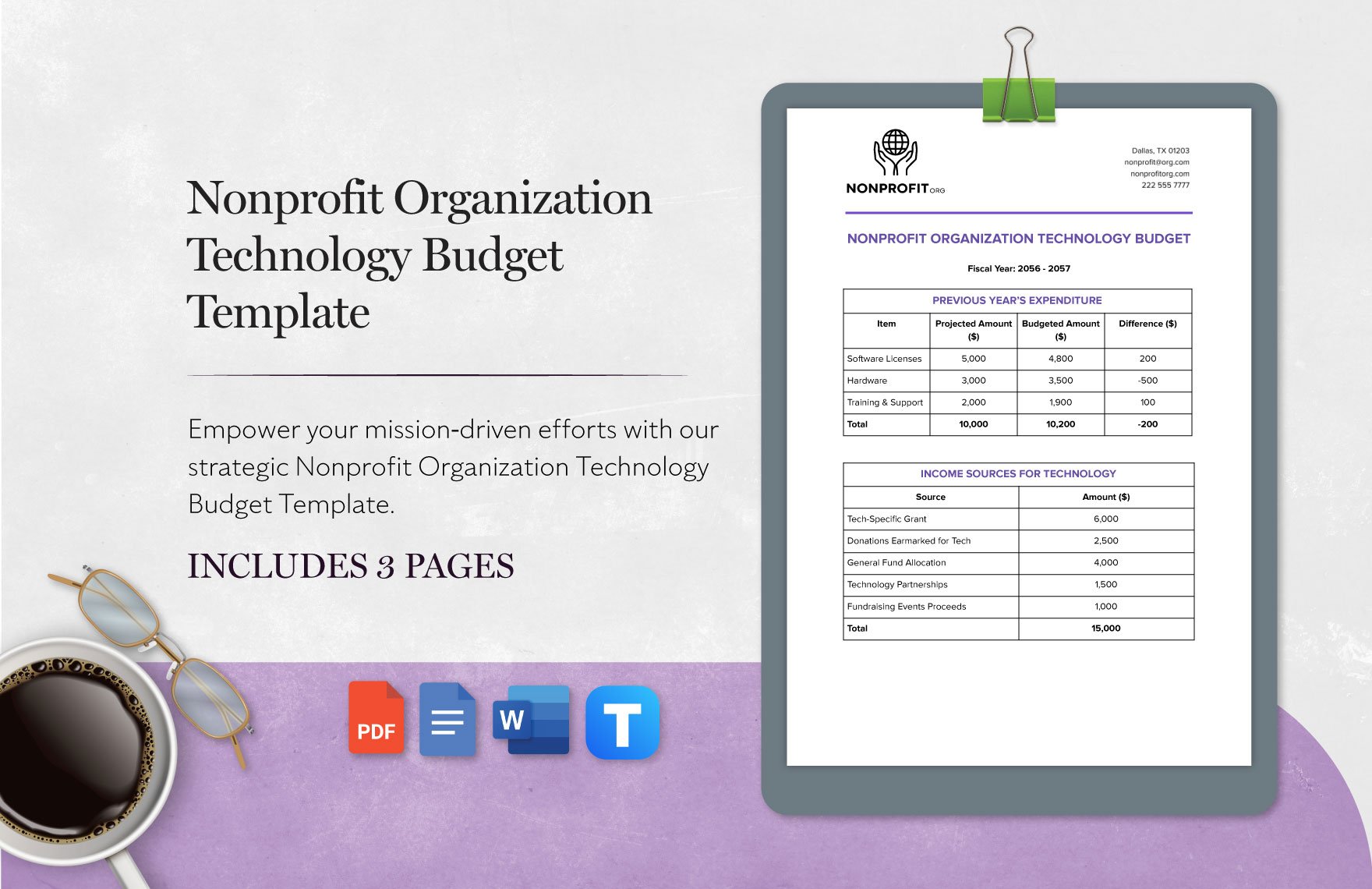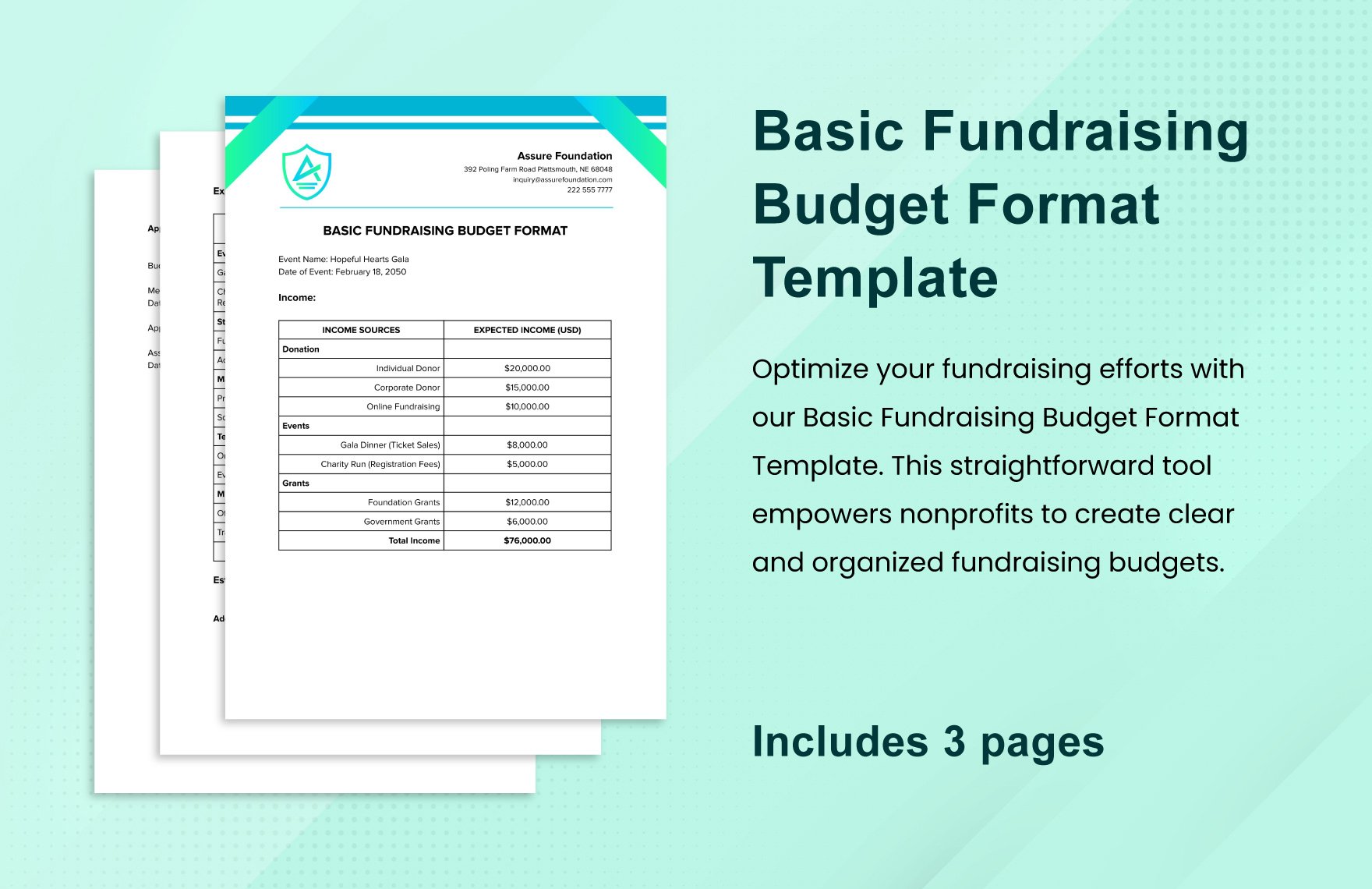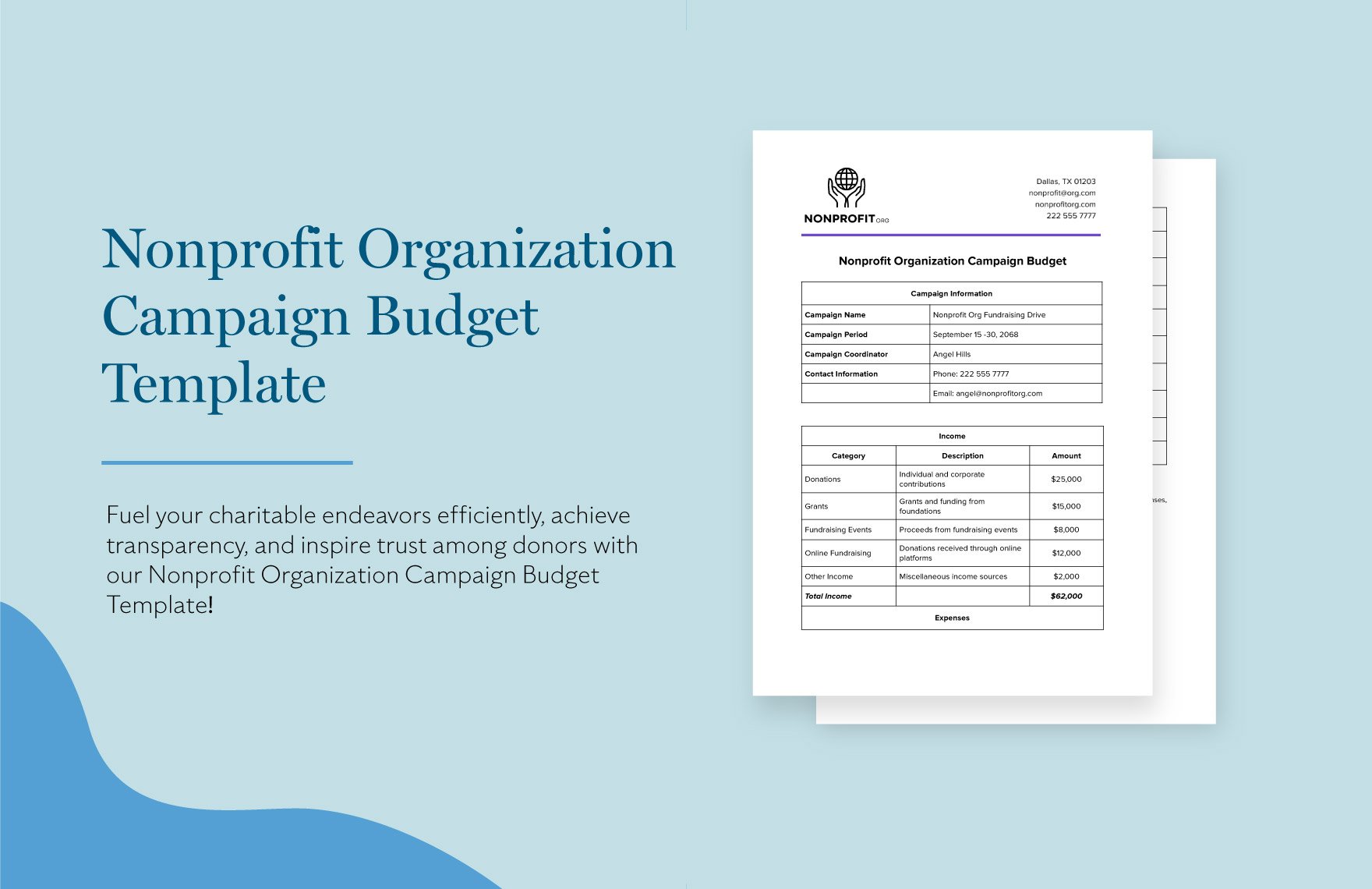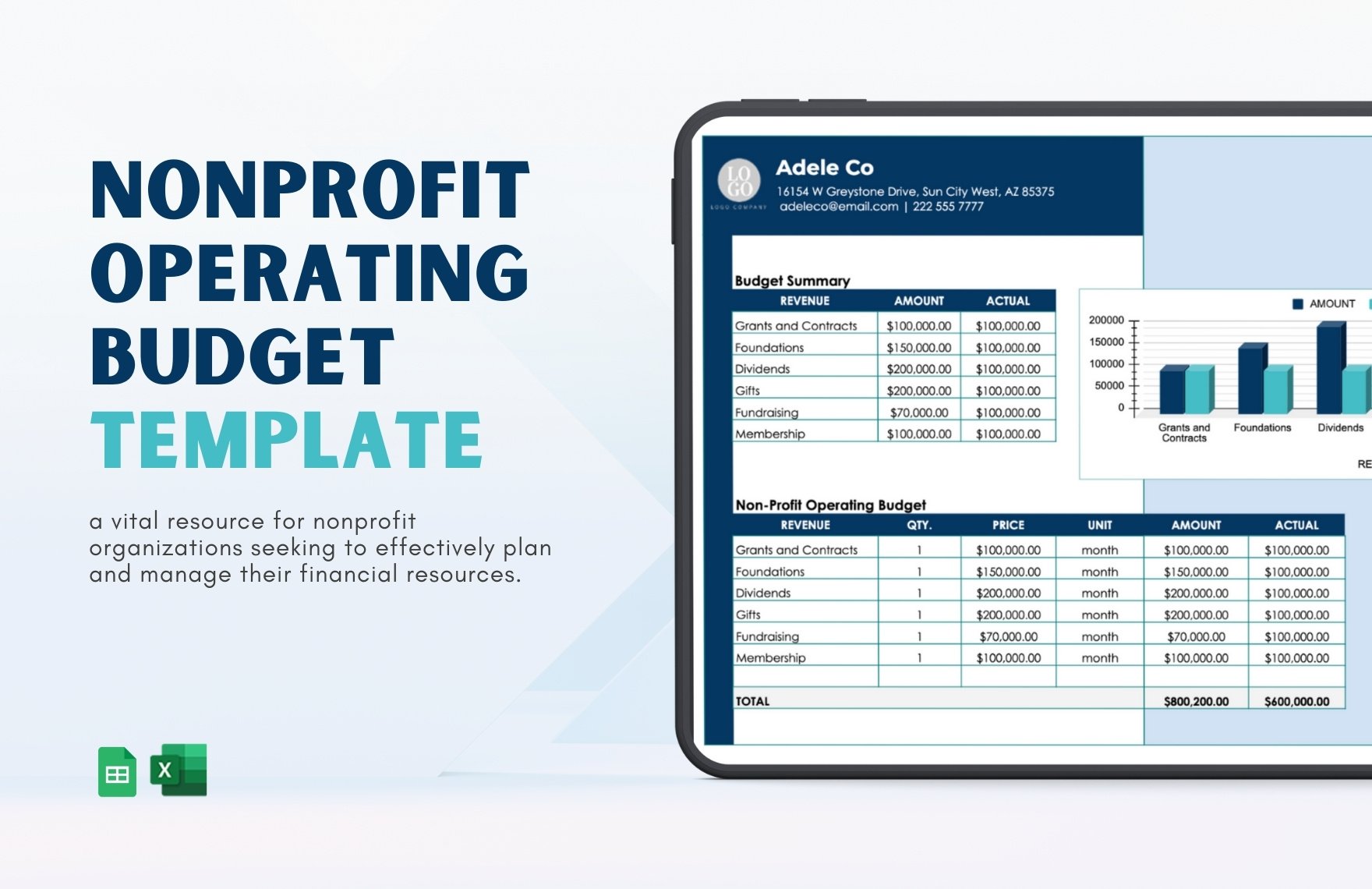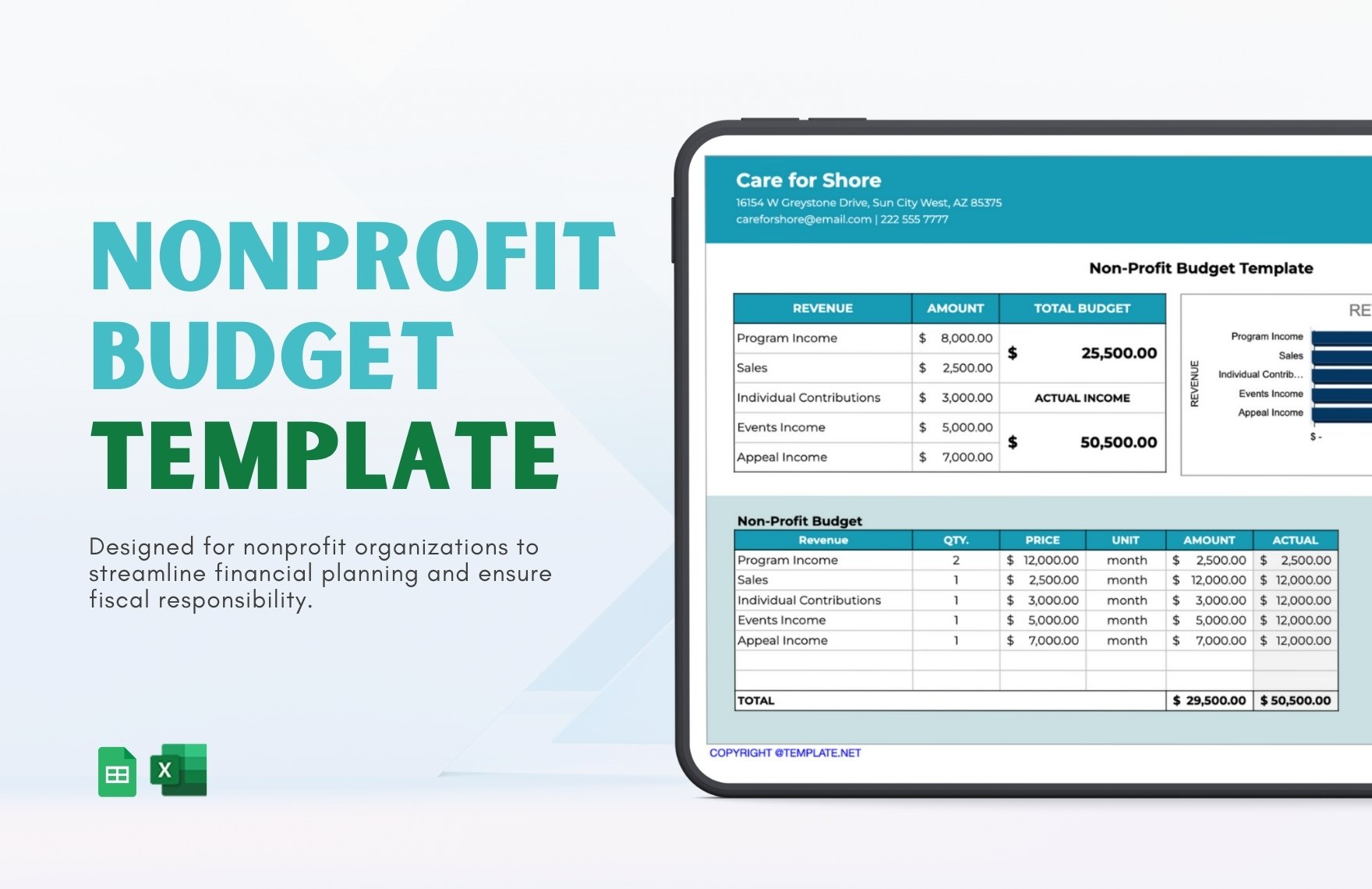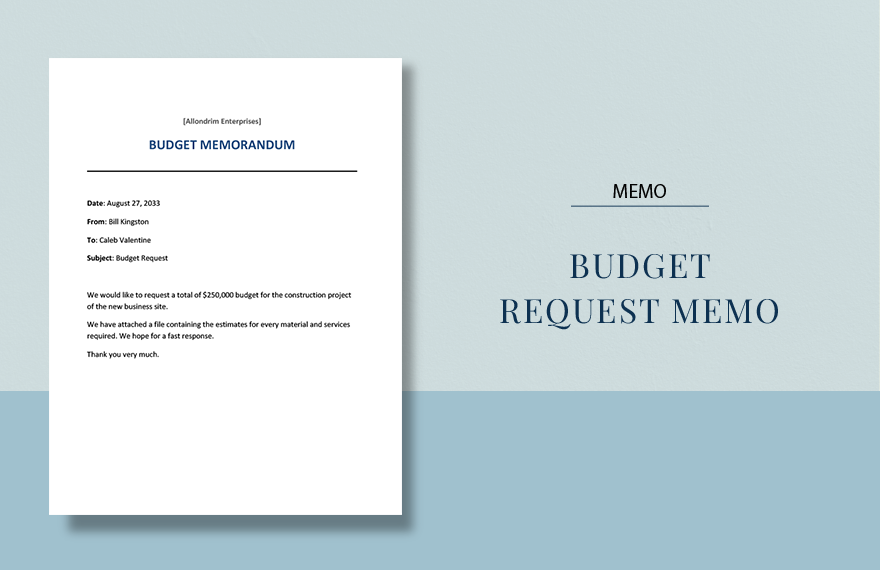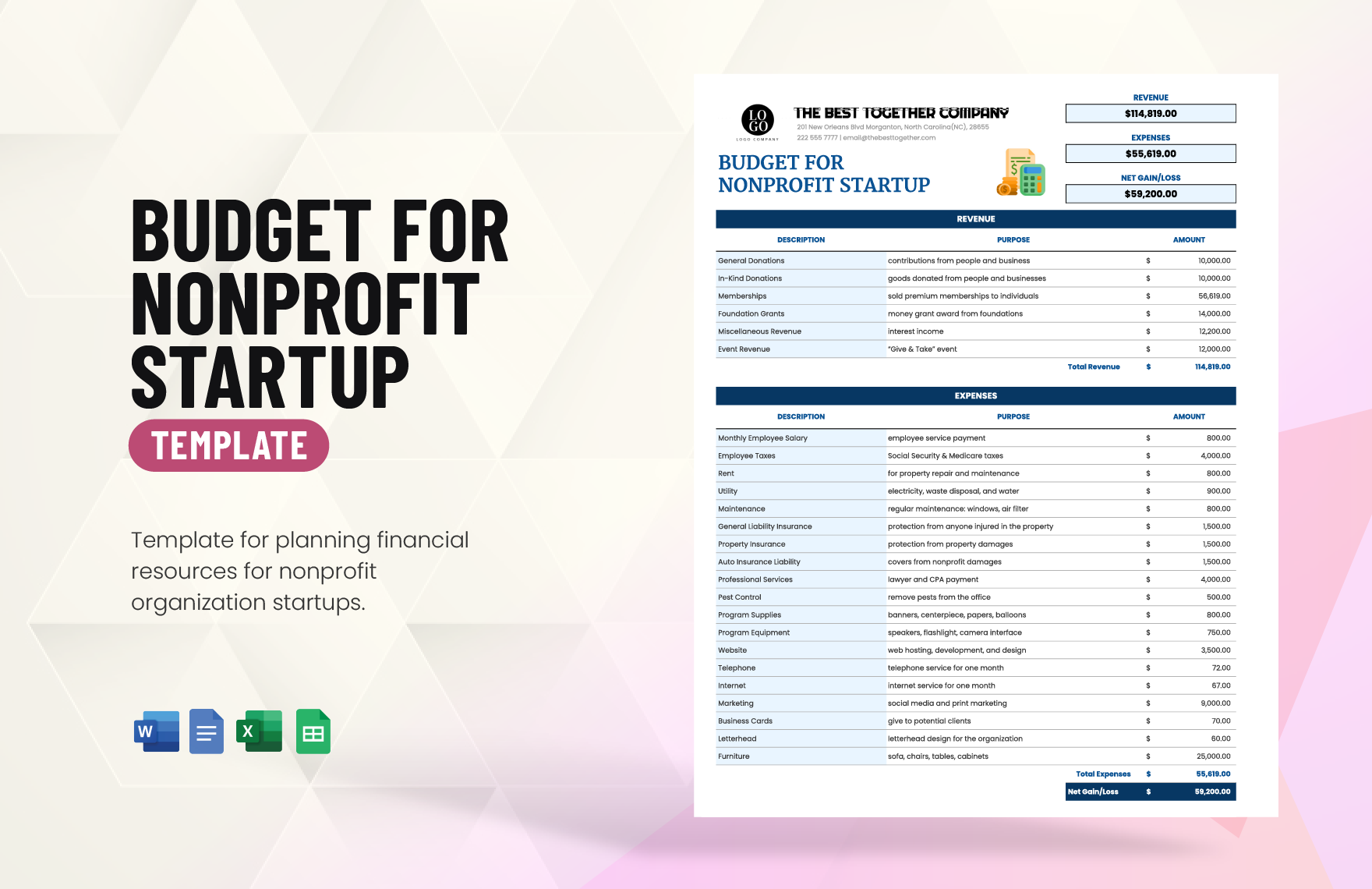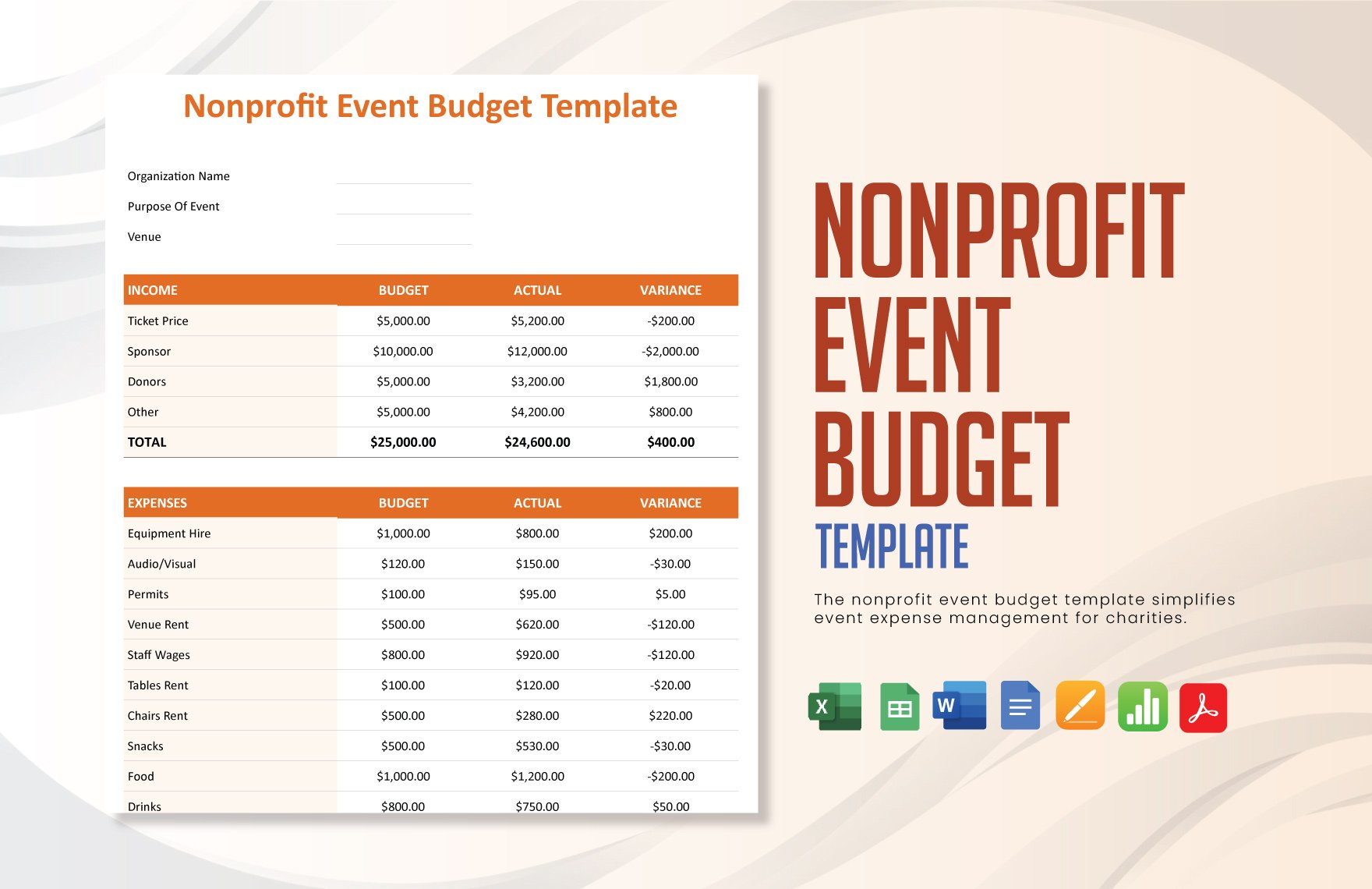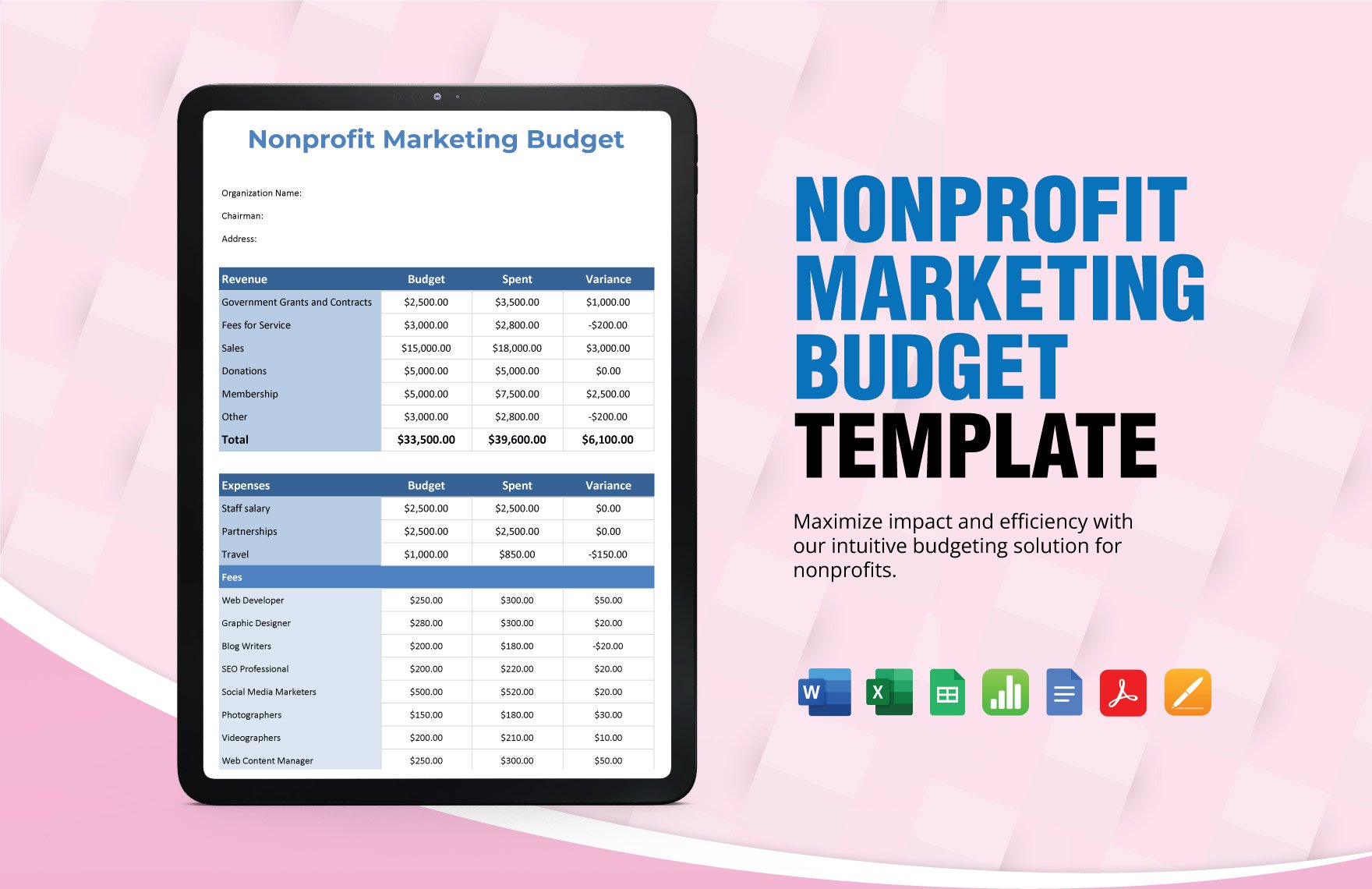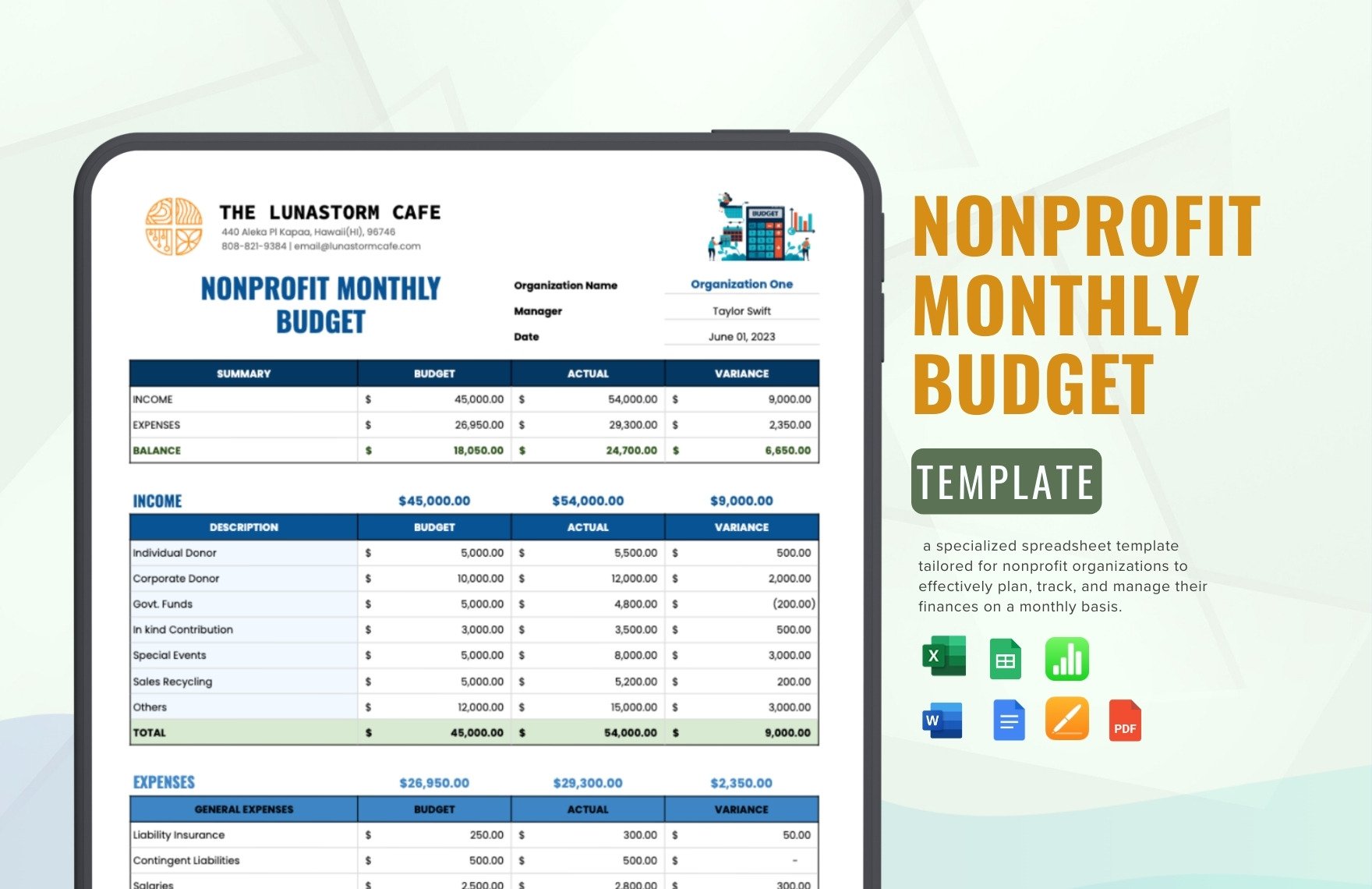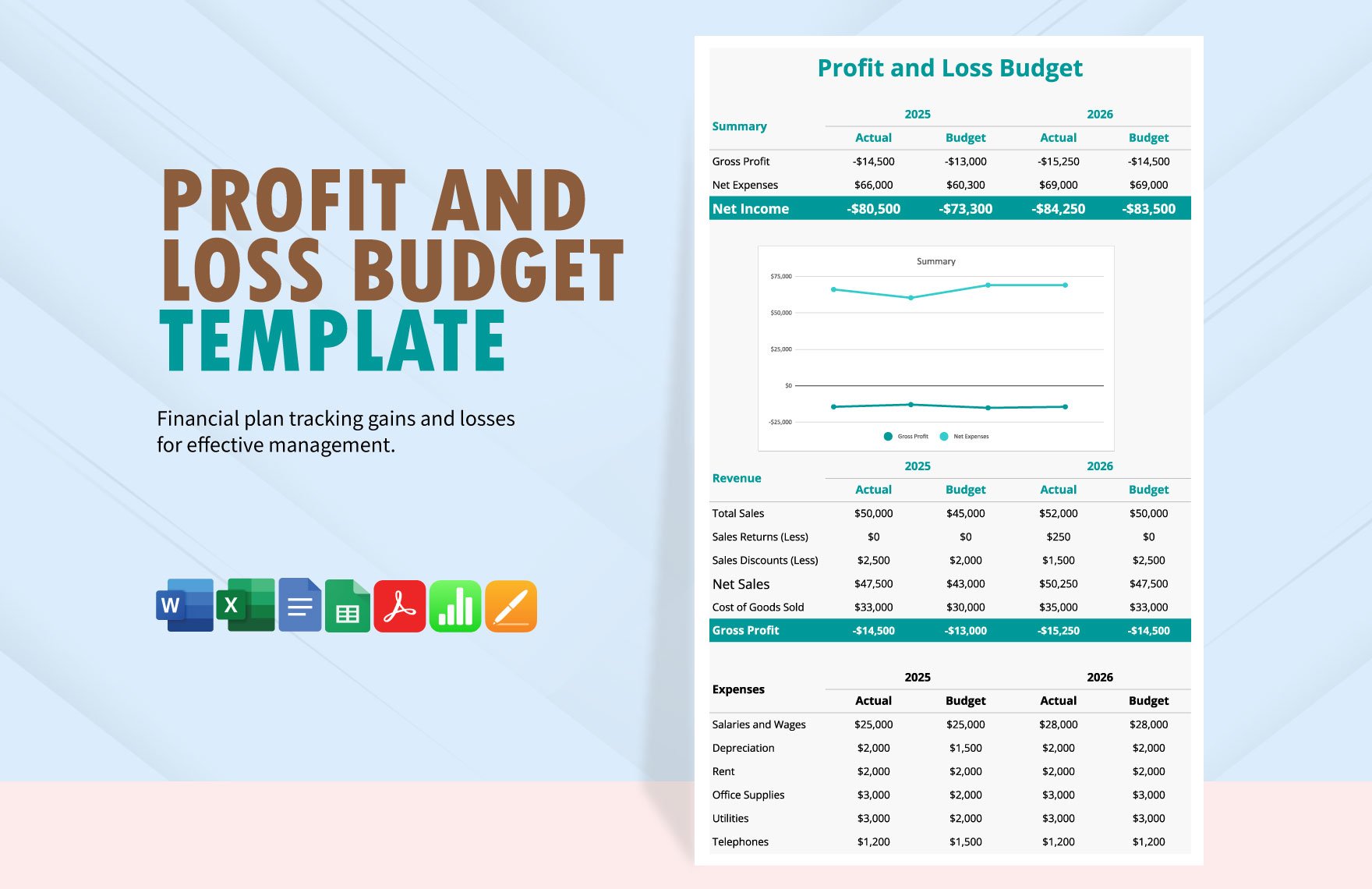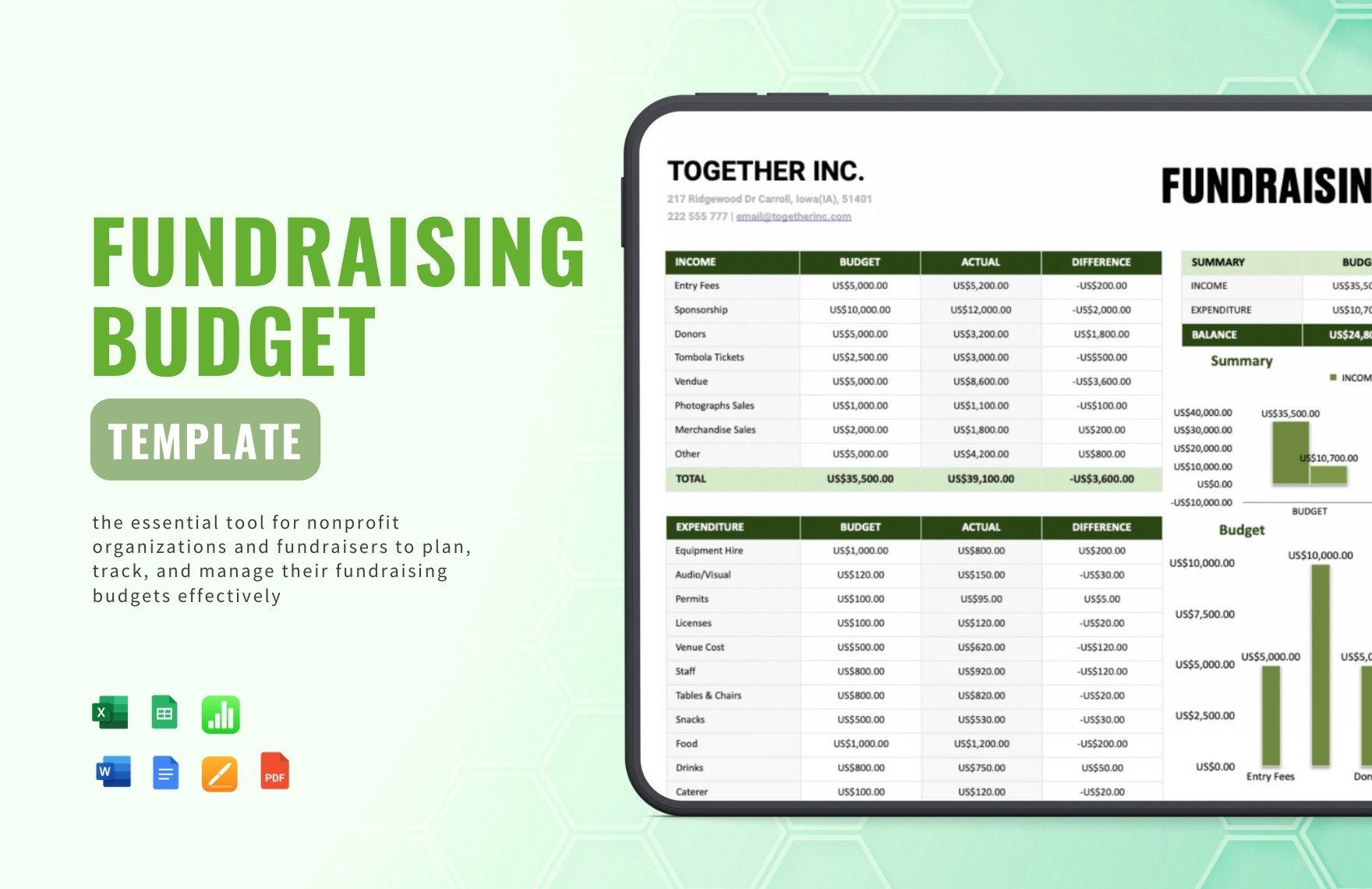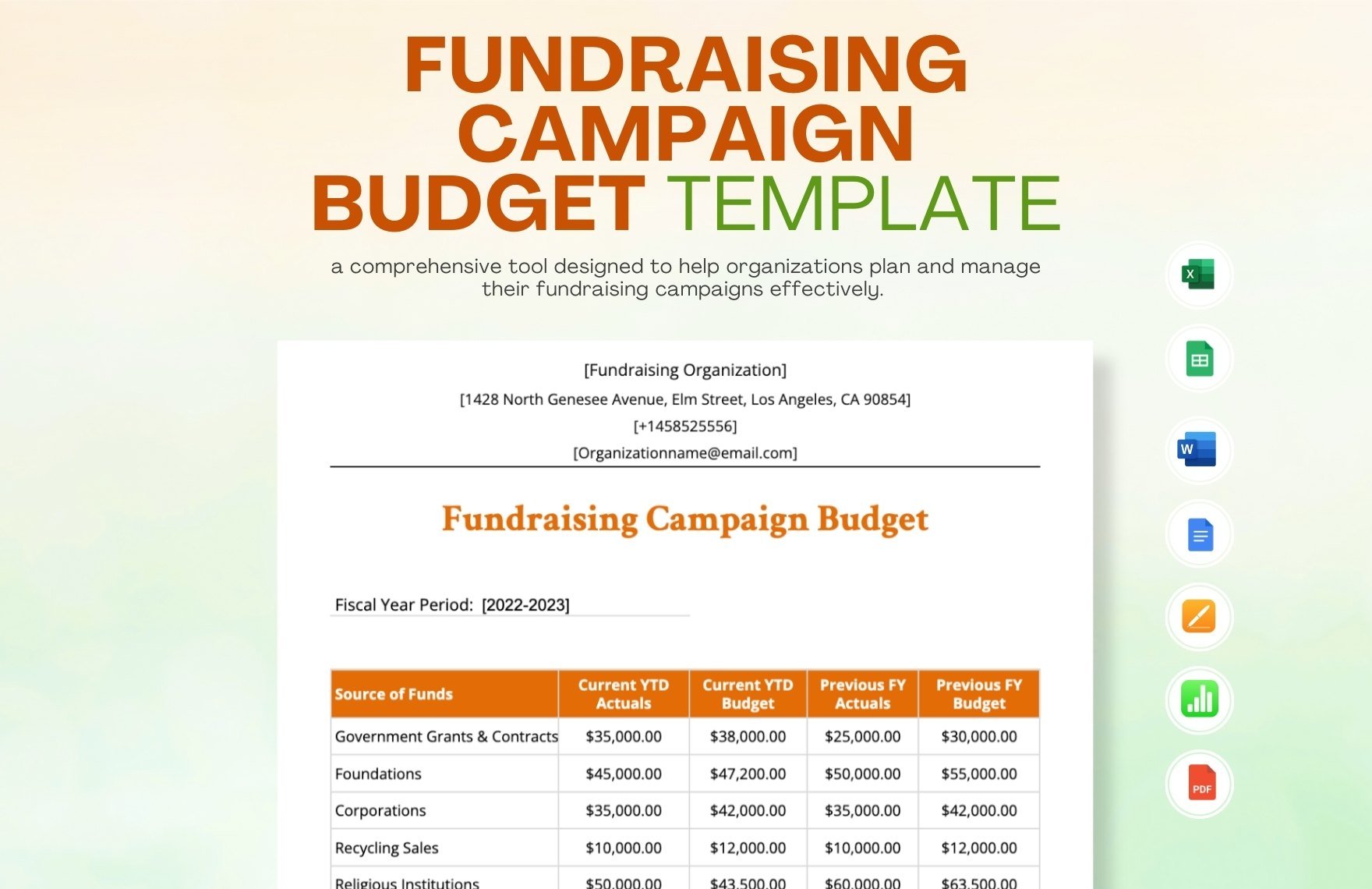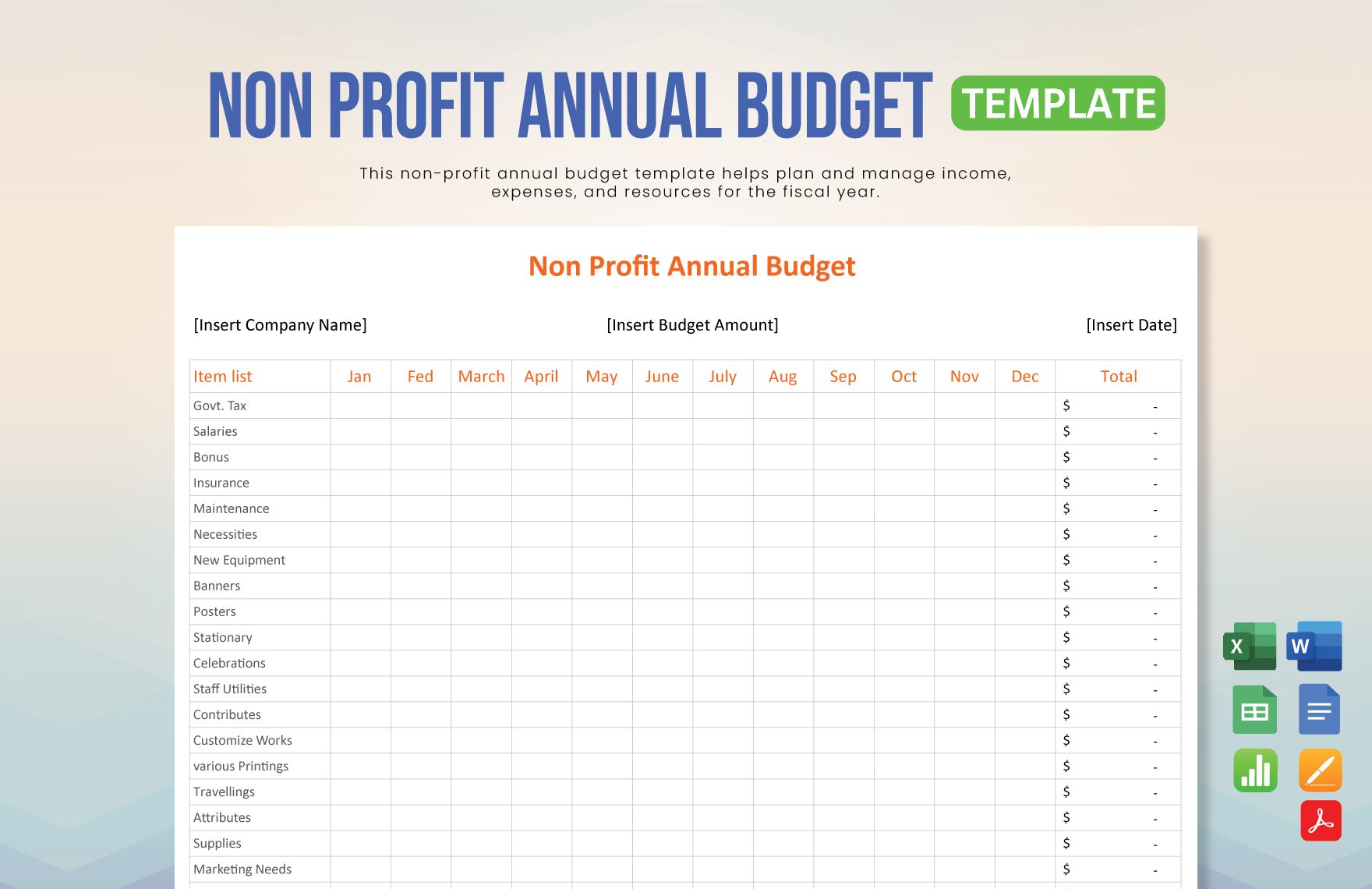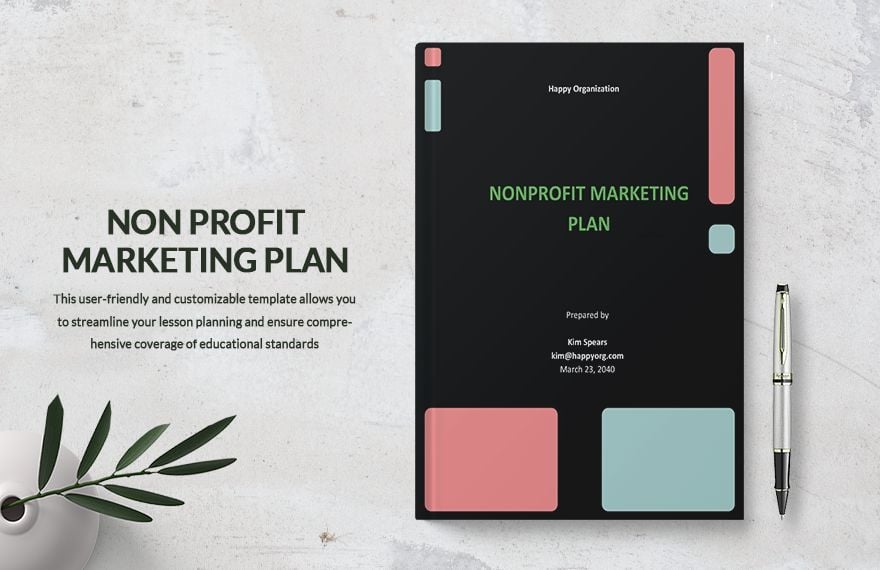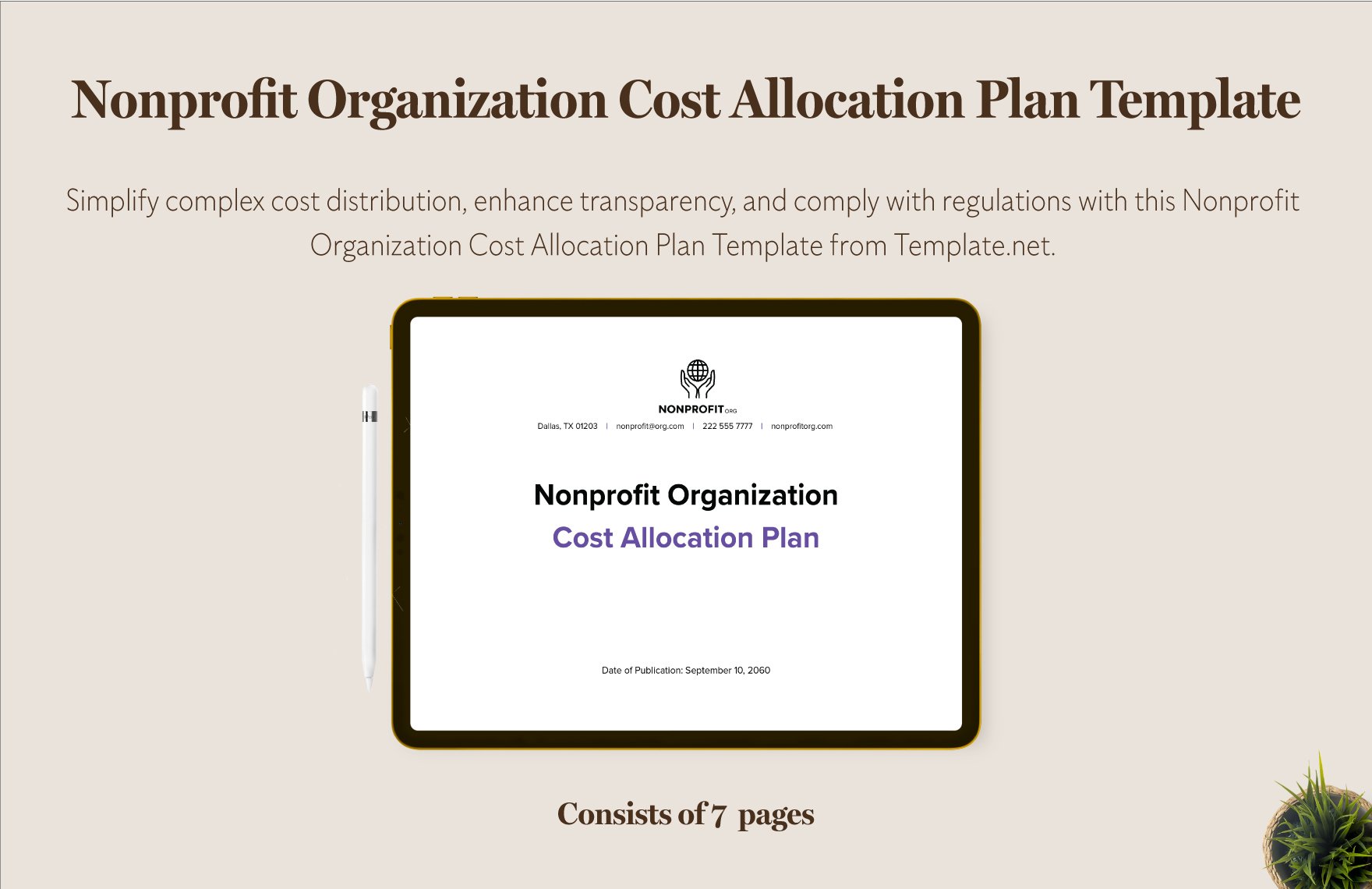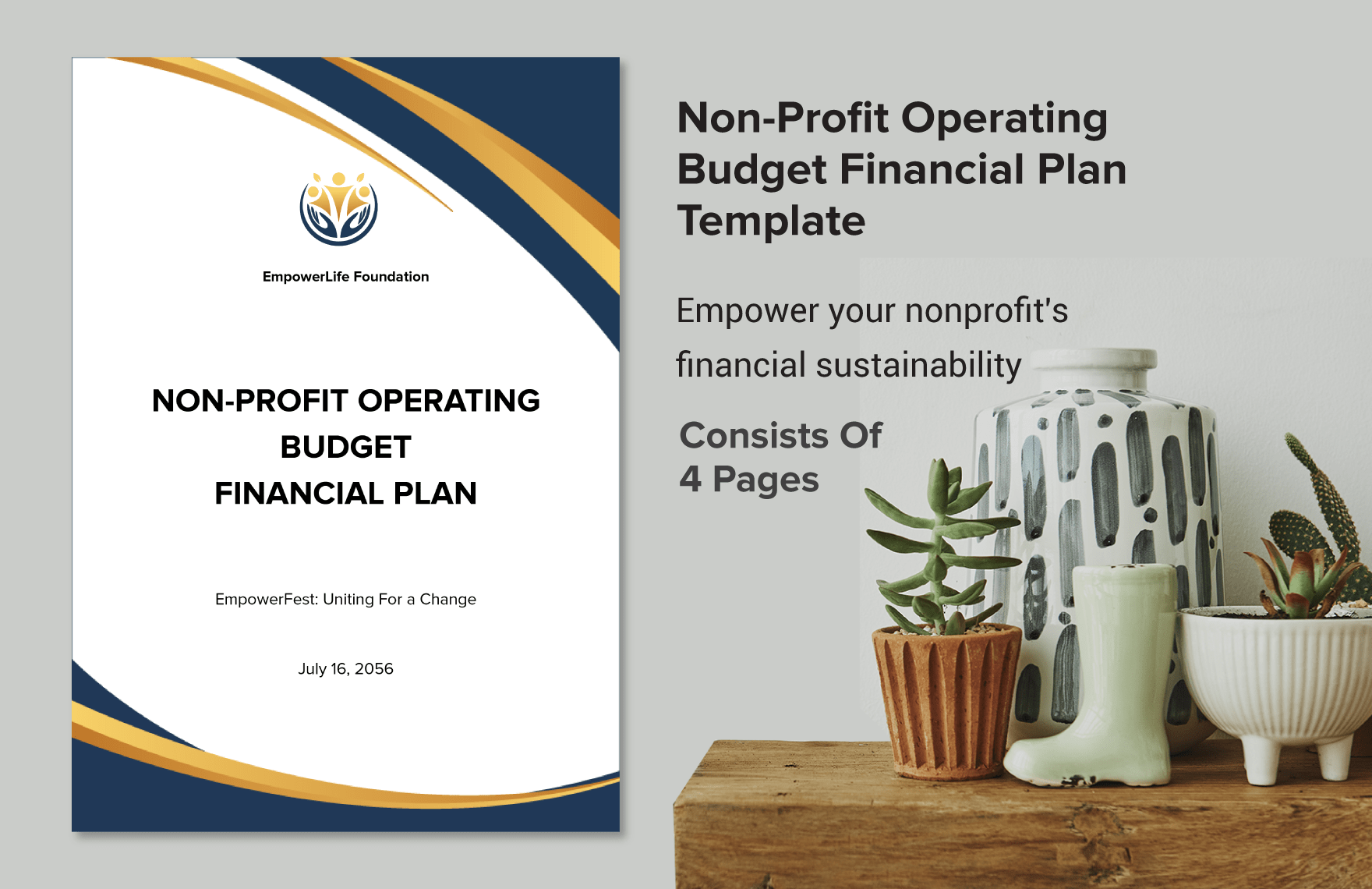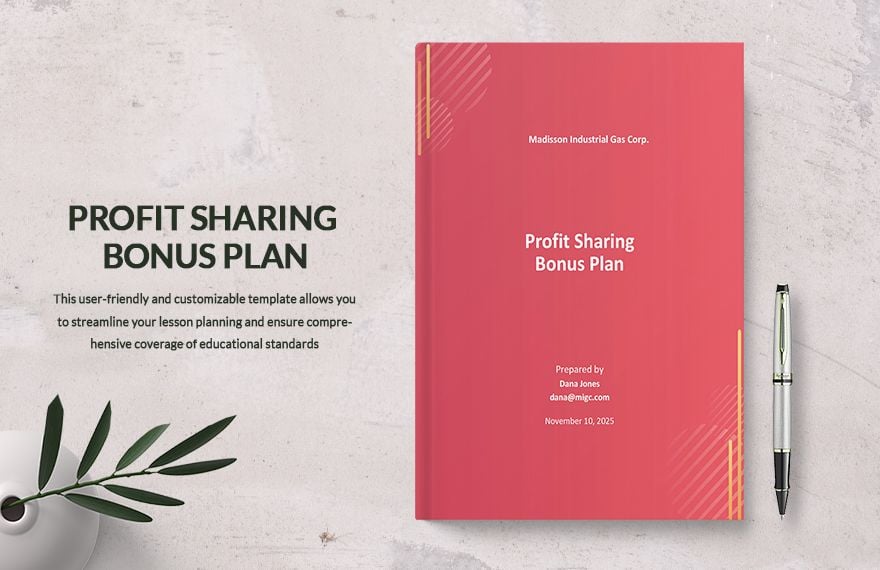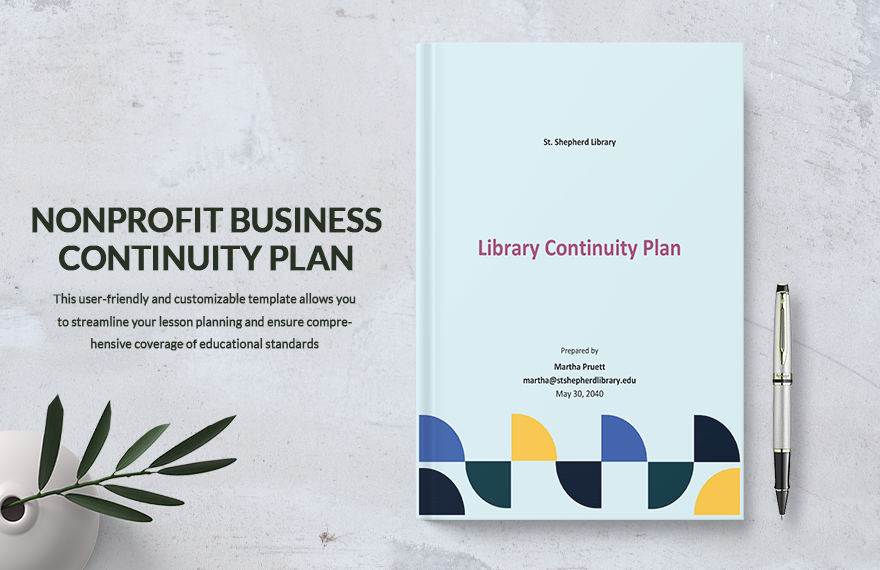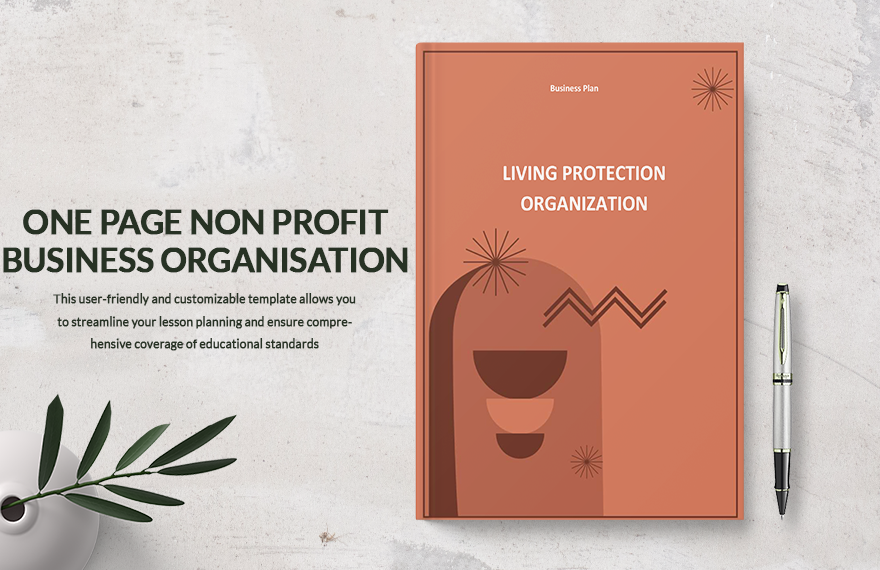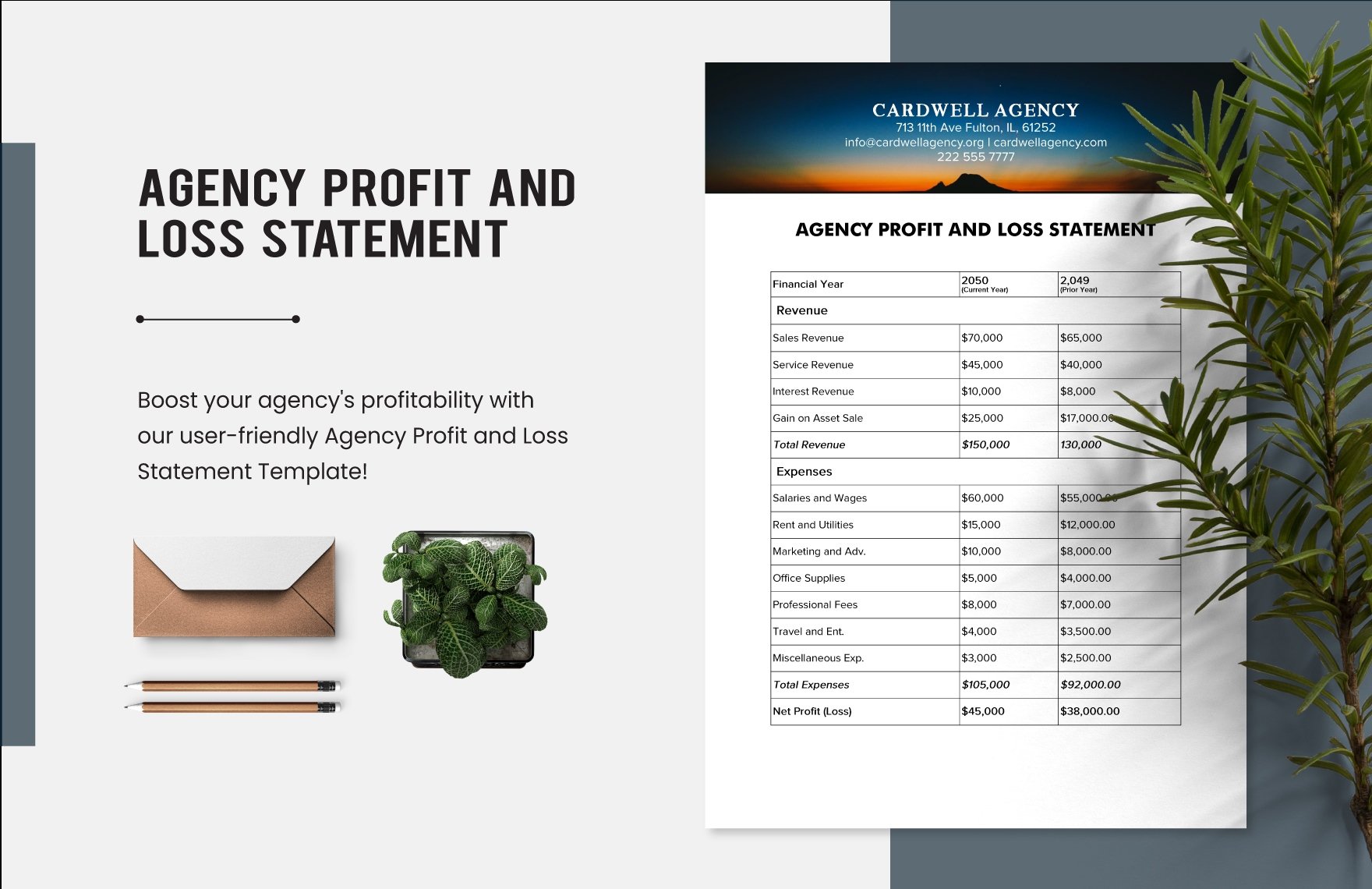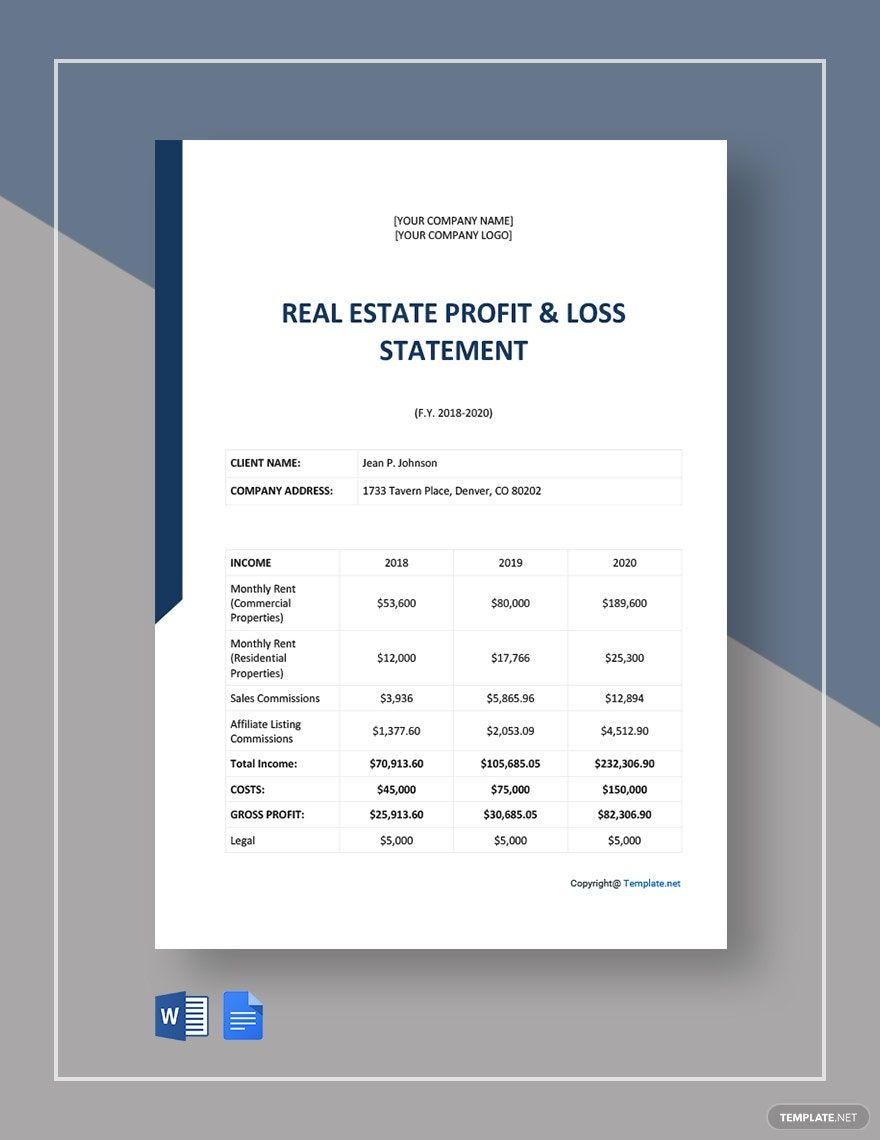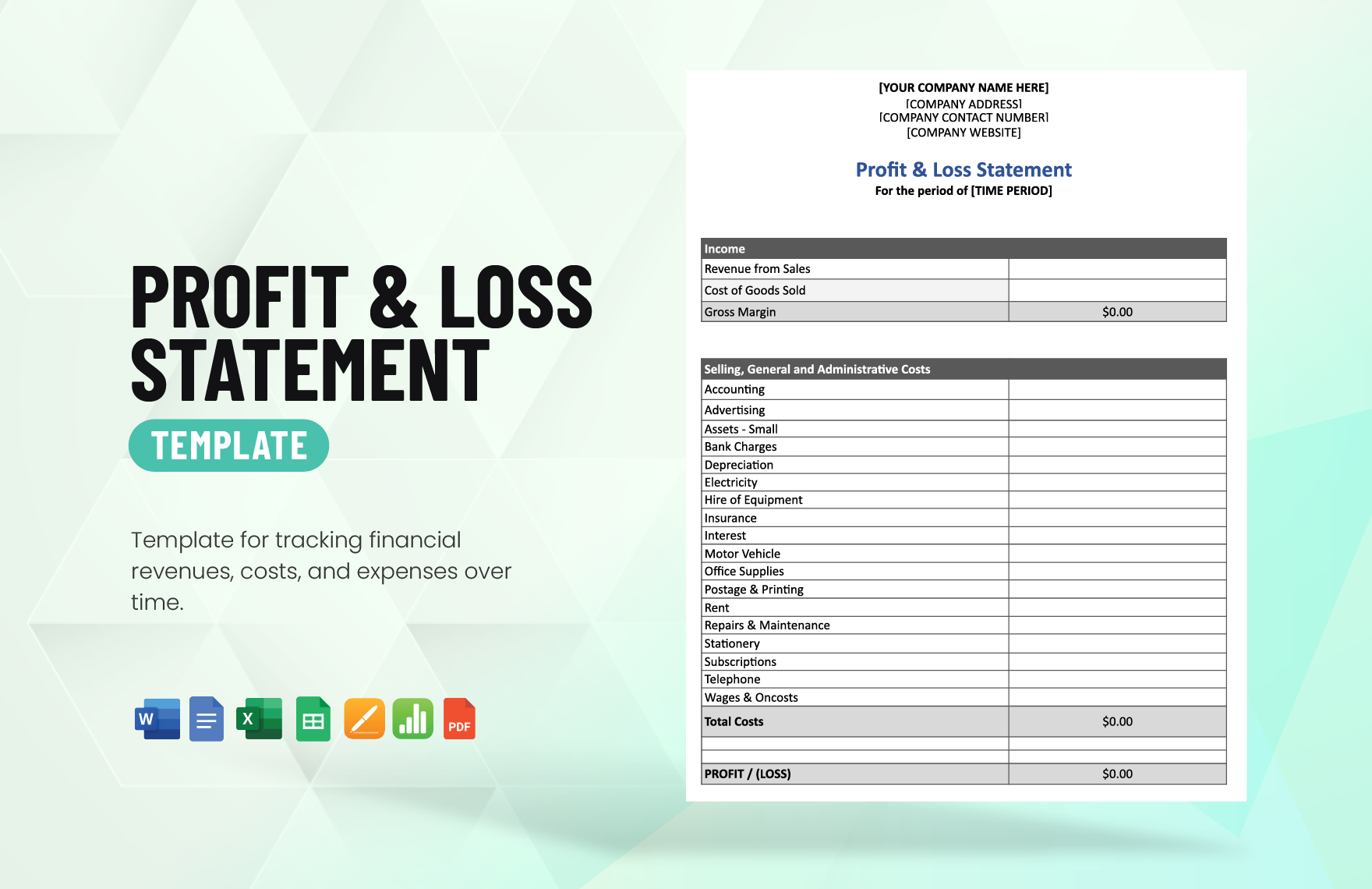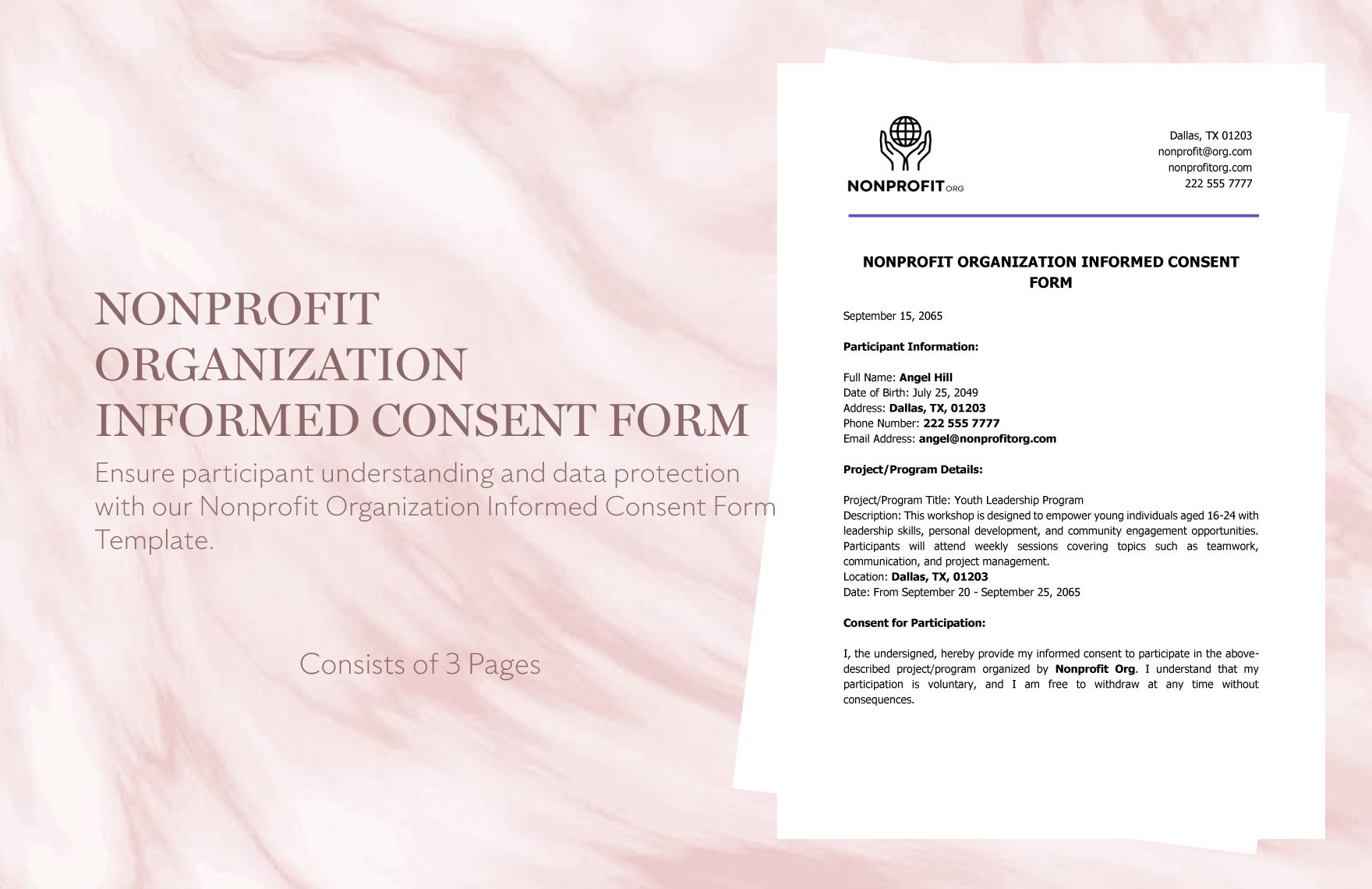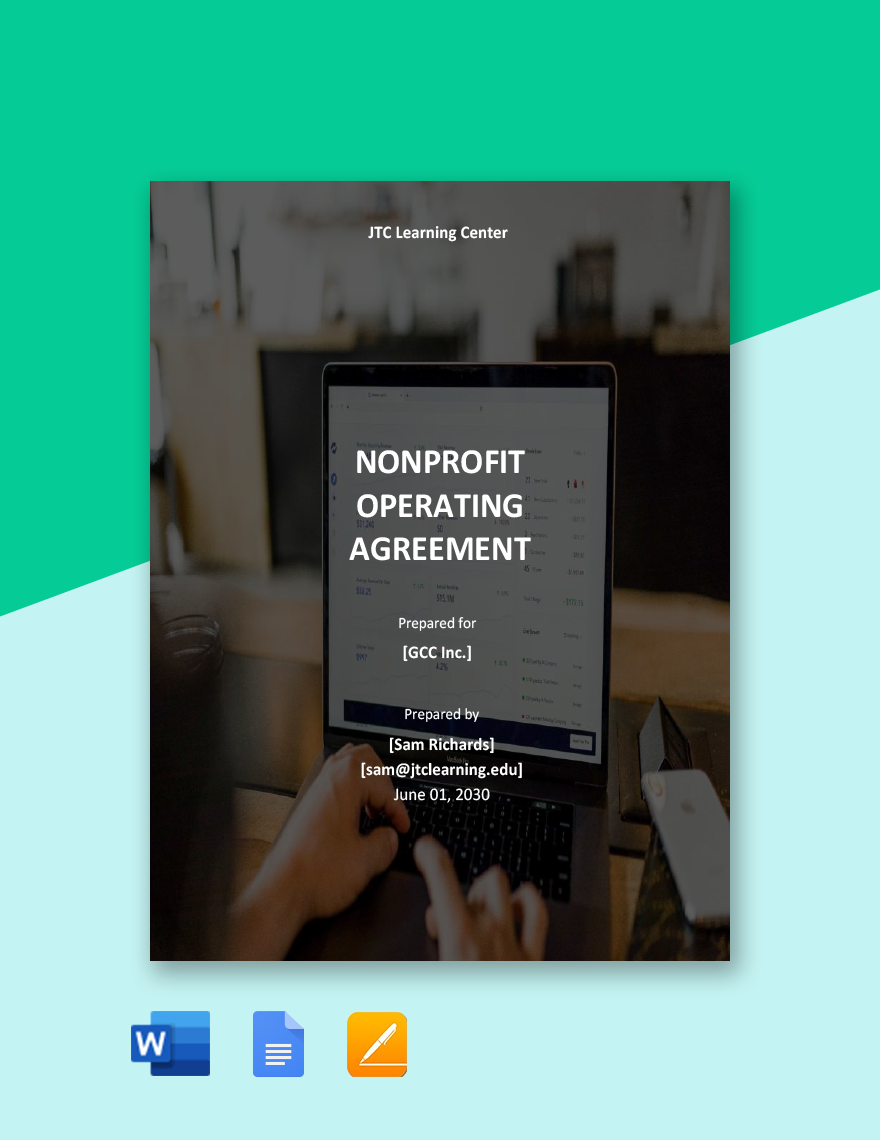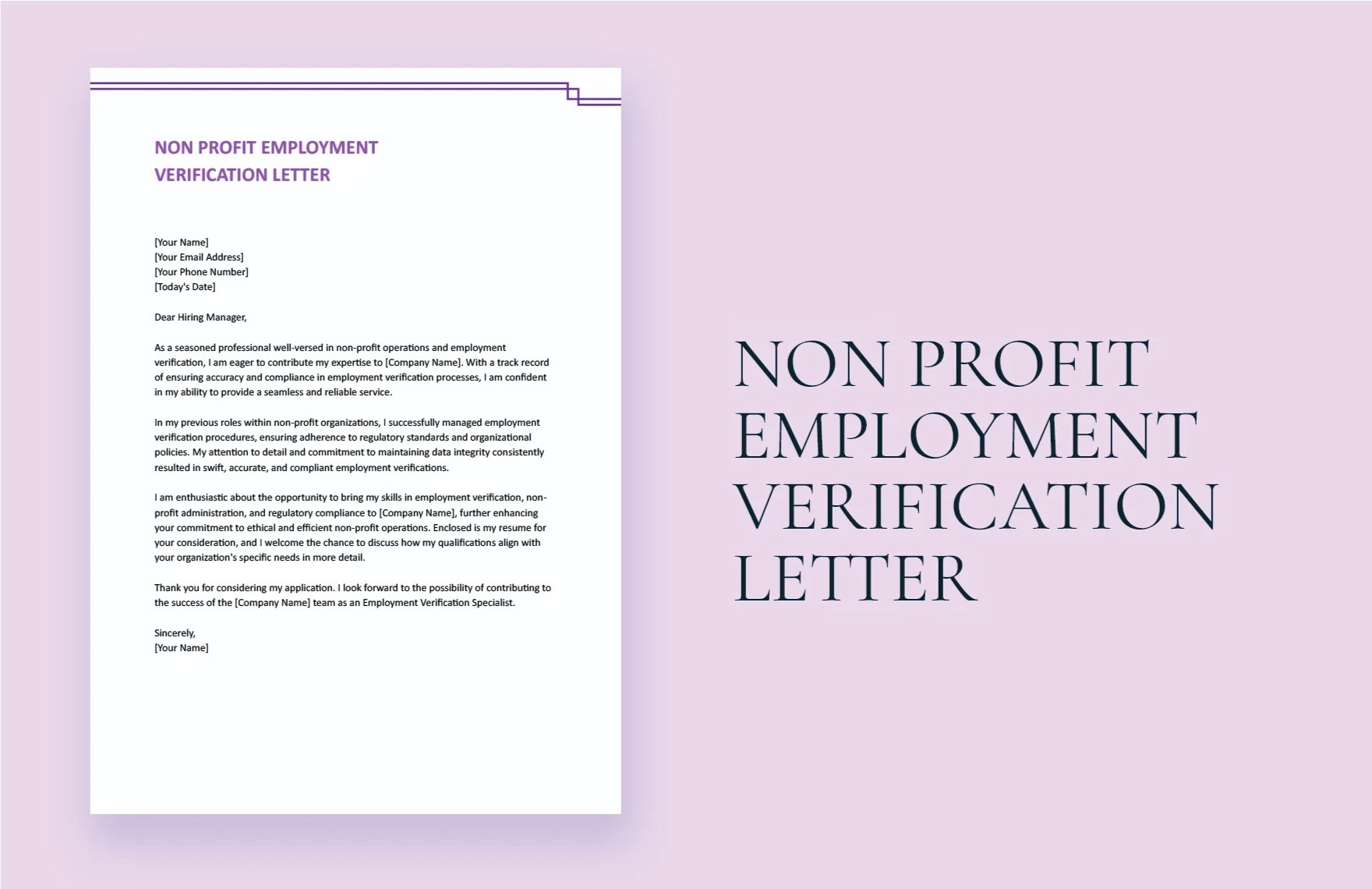Discover Your Organizational Efficiency to Life with Non Profit Budget Templates from Template.net.
Keep your financial team engaged, improve decision-making, and streamline budget management with Non Profit Budget Templates from Template.net. These templates are perfect for non-profit organizations seeking to optimize resource allocation and ensure transparency in their financial planning. Whether you're preparing for a board meeting presentation or organizing a community fundraising event, these templates provide essential structures to support your initiatives. Each template thoughtfully includes sections for time, date, and location, ensuring that your financial details are clear and organized. With no complex software required, these professional-grade templates are fully customizable for print or digital distribution, making them an indispensable asset for any non-profit team.
Discover the many Non Profit Budget Templates we have on hand to cater to your specific needs. Begin by selecting a template that suits your organization's style, and effortlessly swap in your financial data and organizational assets. Tweak colors, adjust fonts, and even drag-and-drop icons to match your brand’s identity. For an enhanced experience, add animated effects or utilize AI-powered text tools to craft compelling budget narratives. With endless possibilities and no technical skills required, these templates turn budgeting into an engaging and stress-free task. Explore our regularly updated libraries for new designs added weekly. When you’re finished, download or share your completed budget via link, print, email, or export options, making sure your documents are ready for multiple channels and real-time collaboration.
